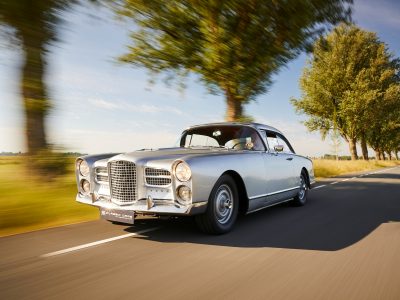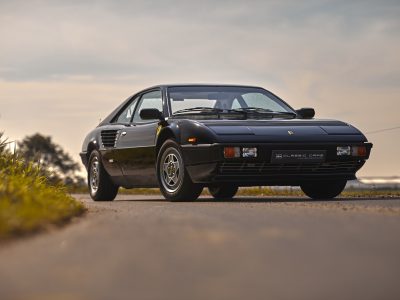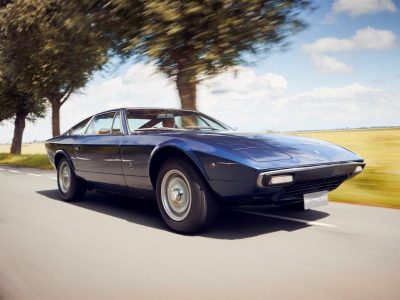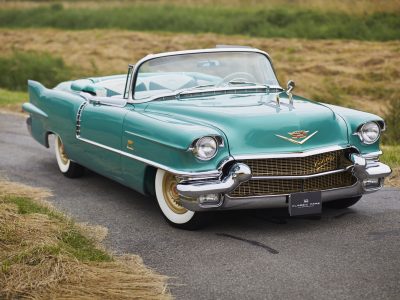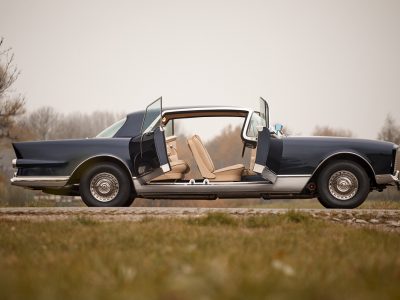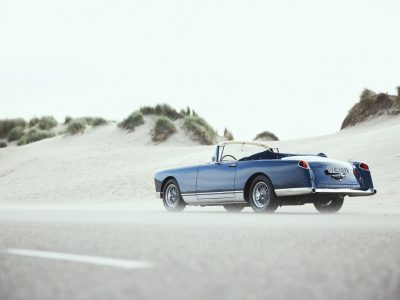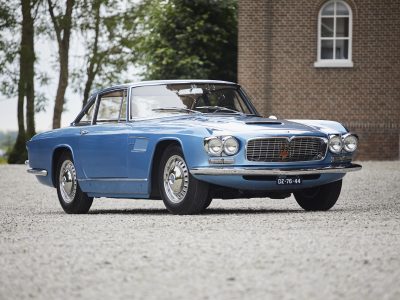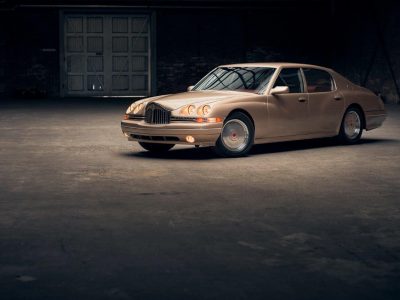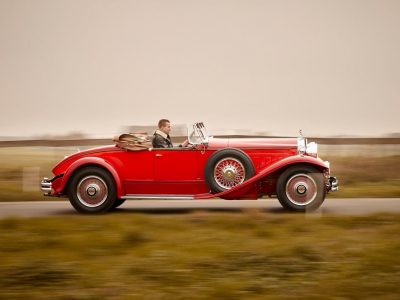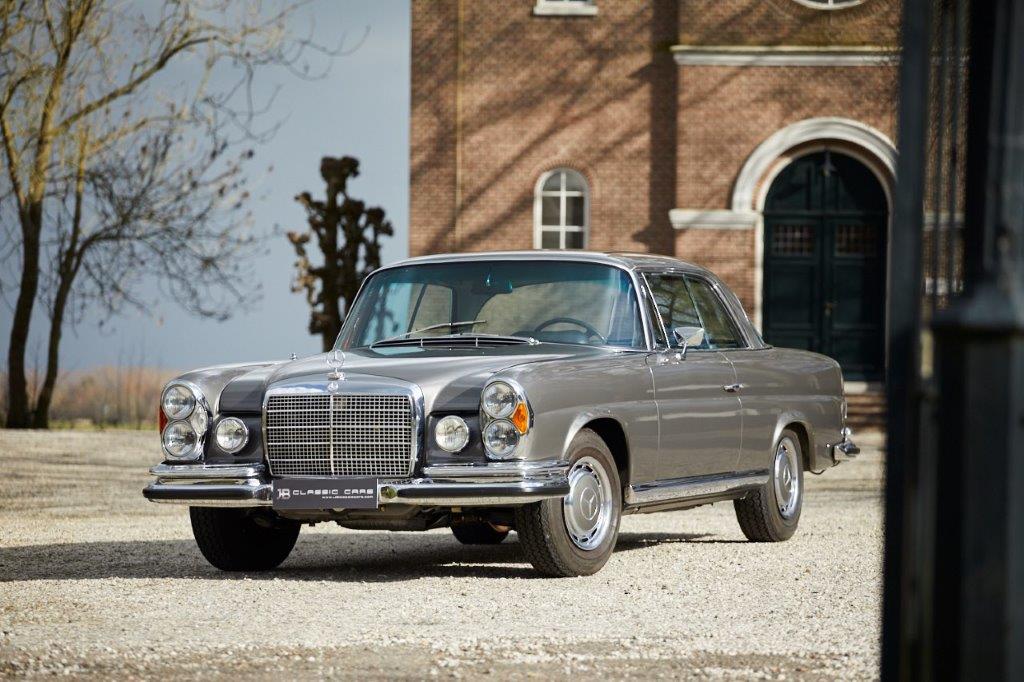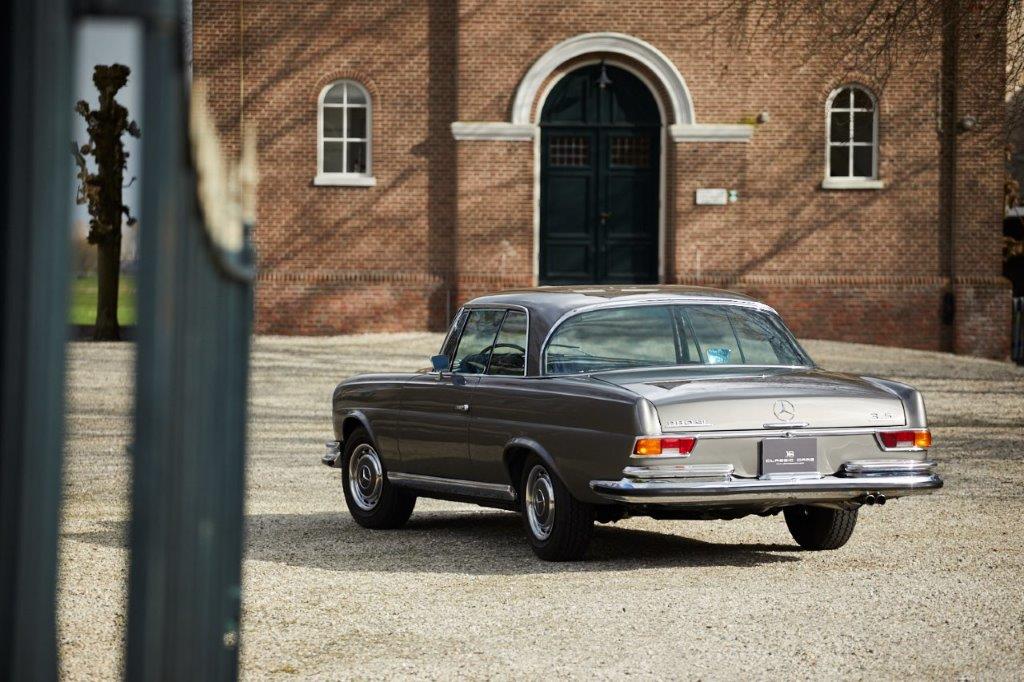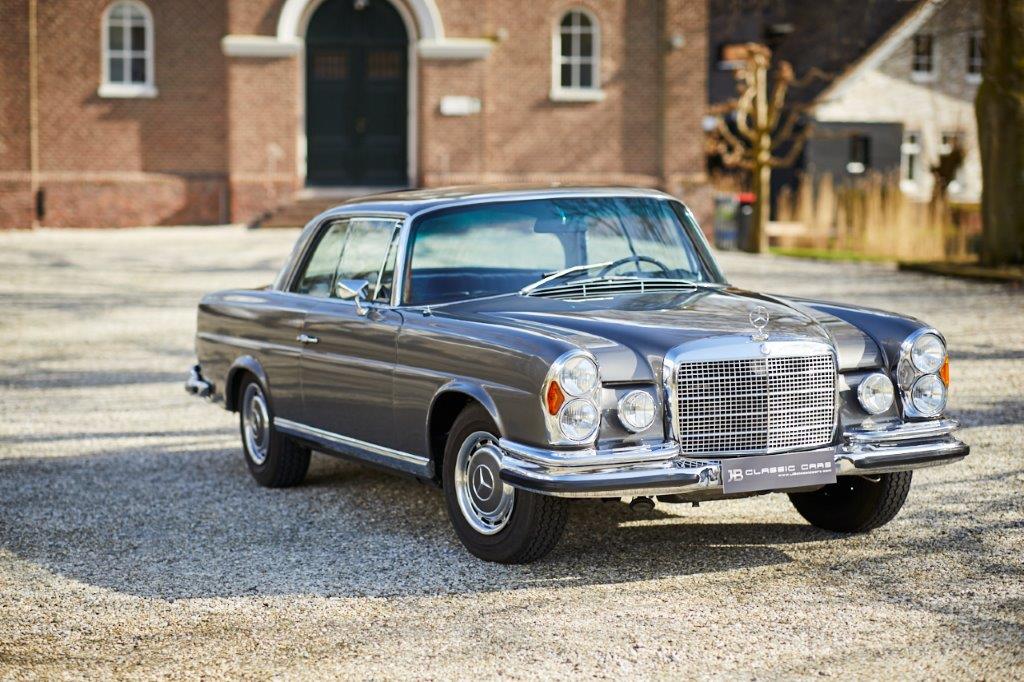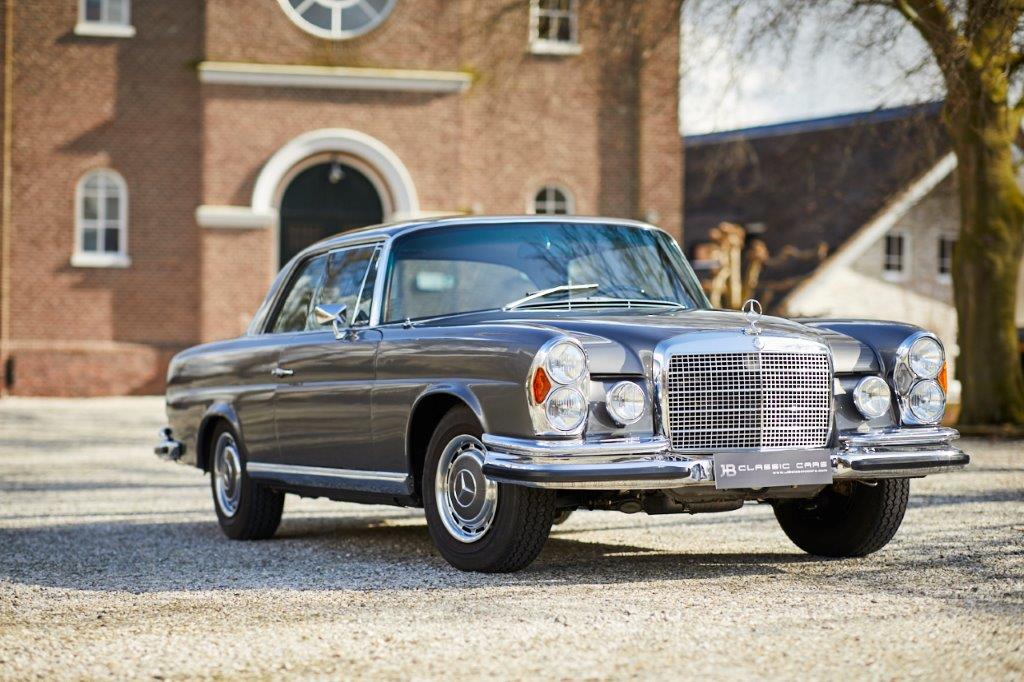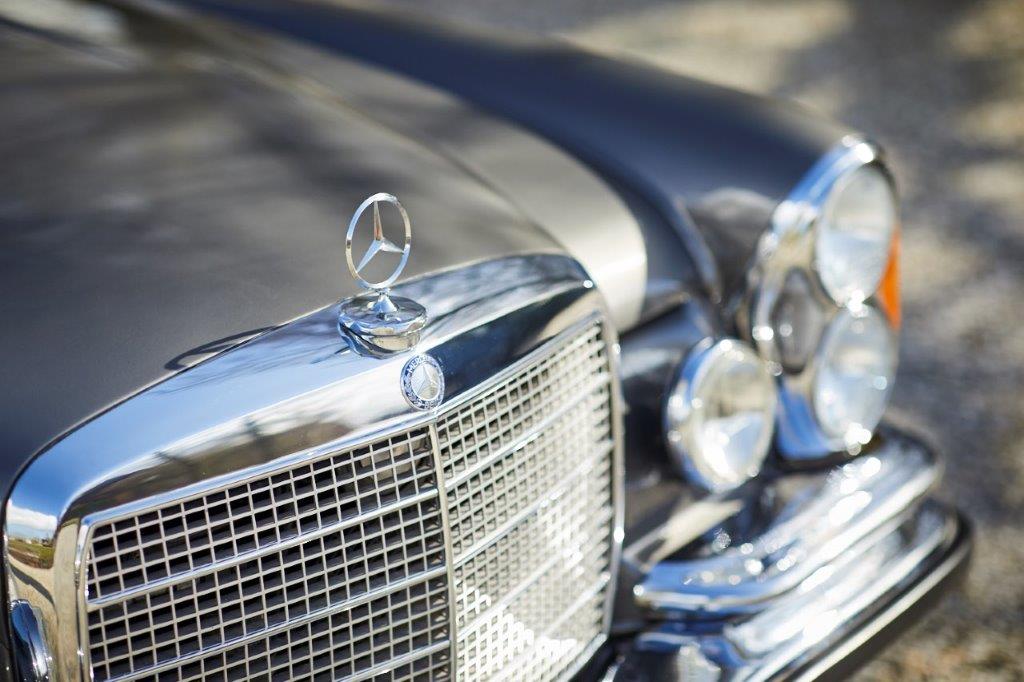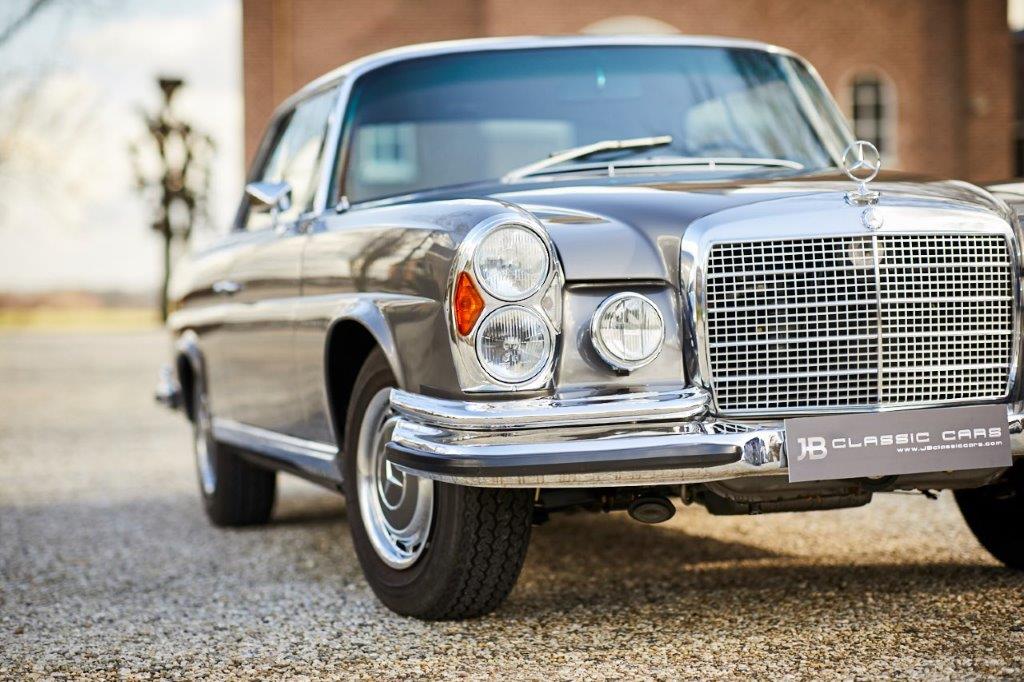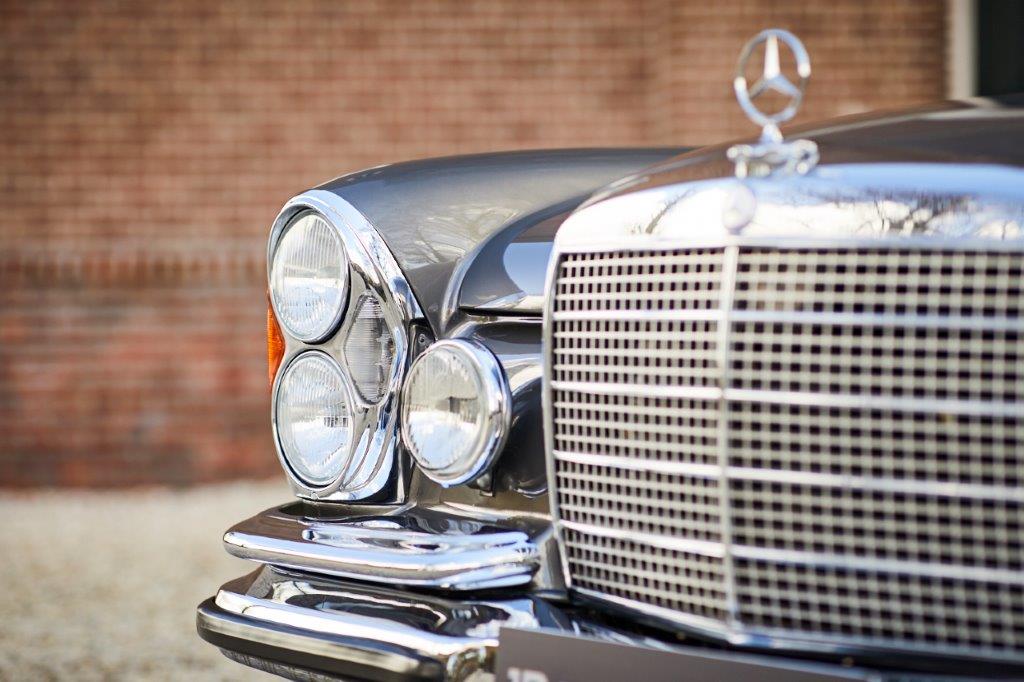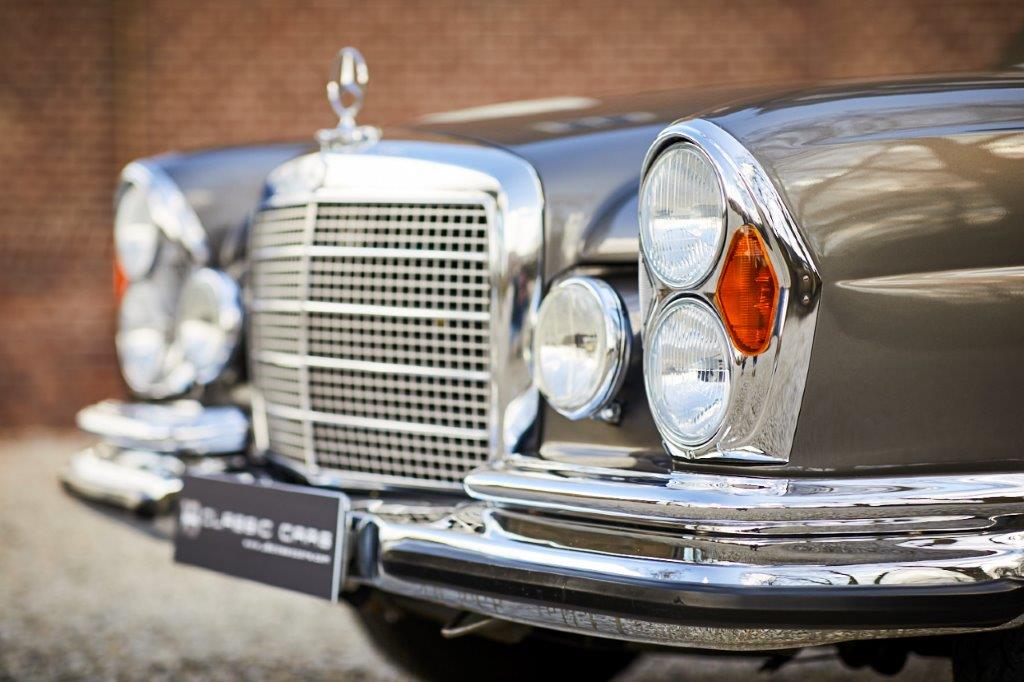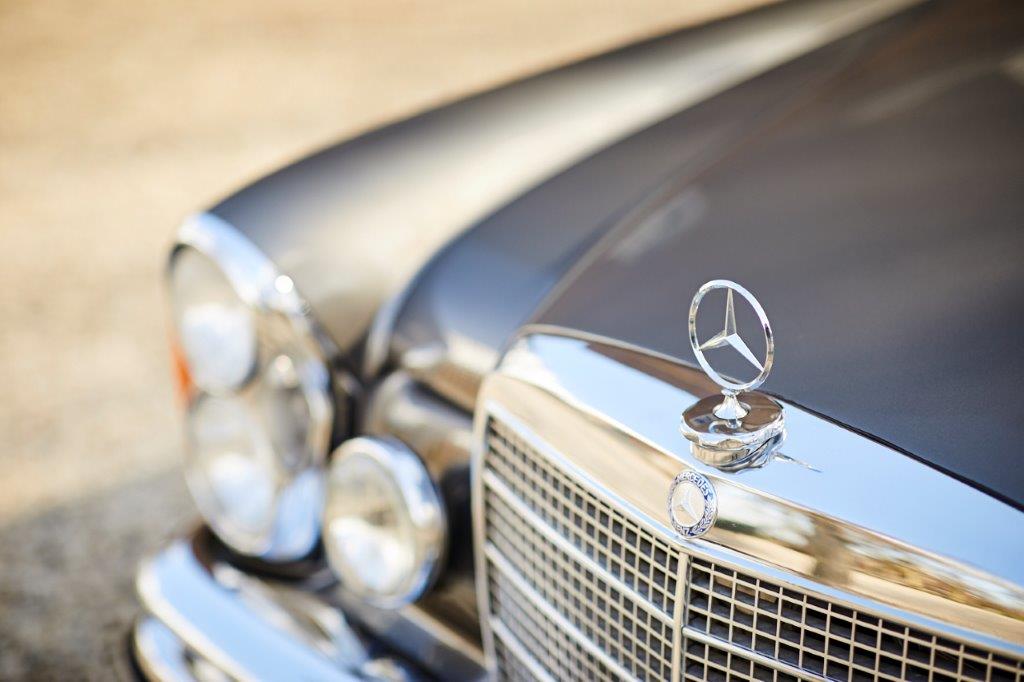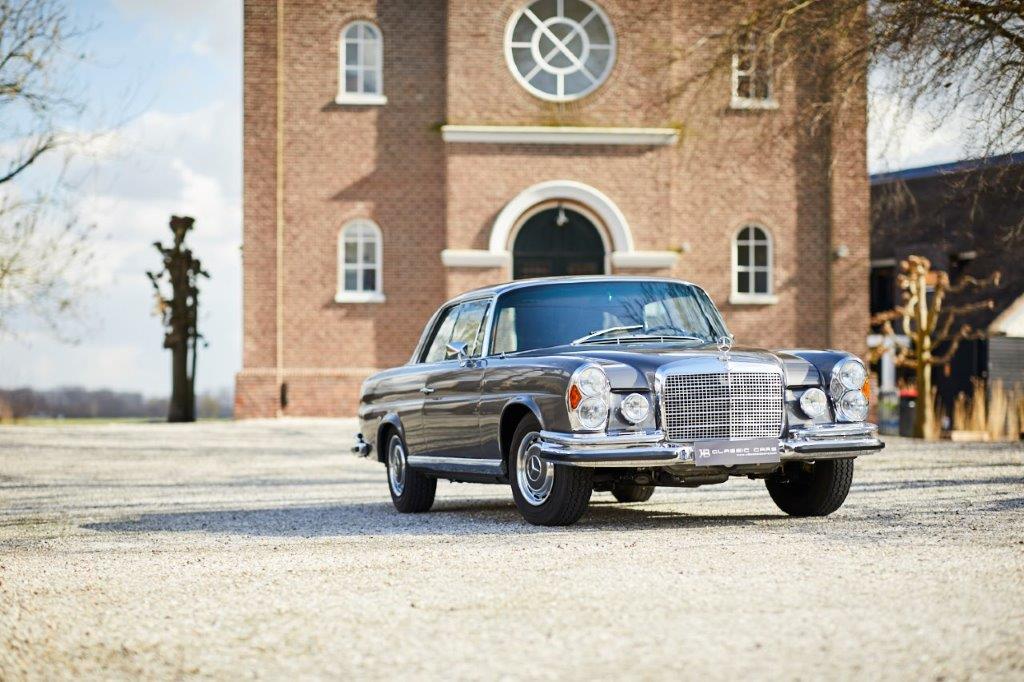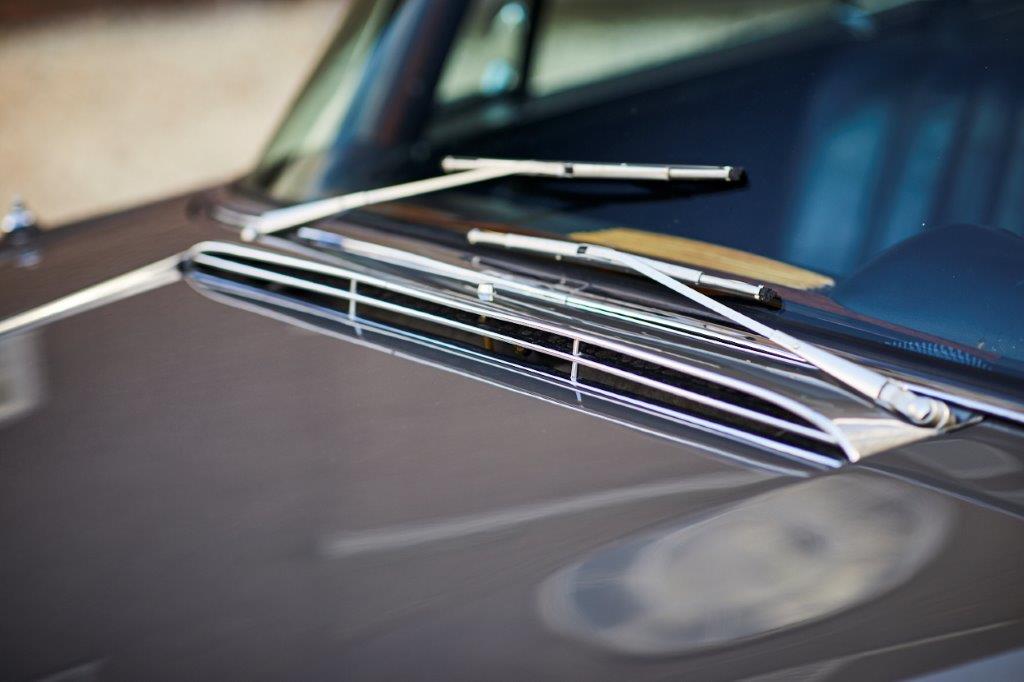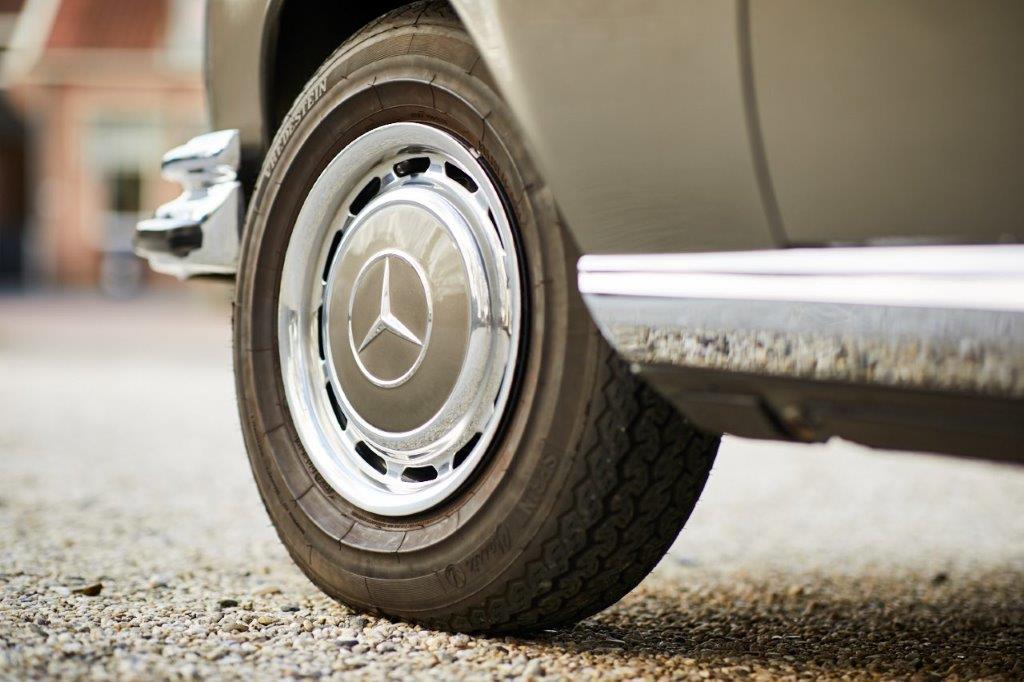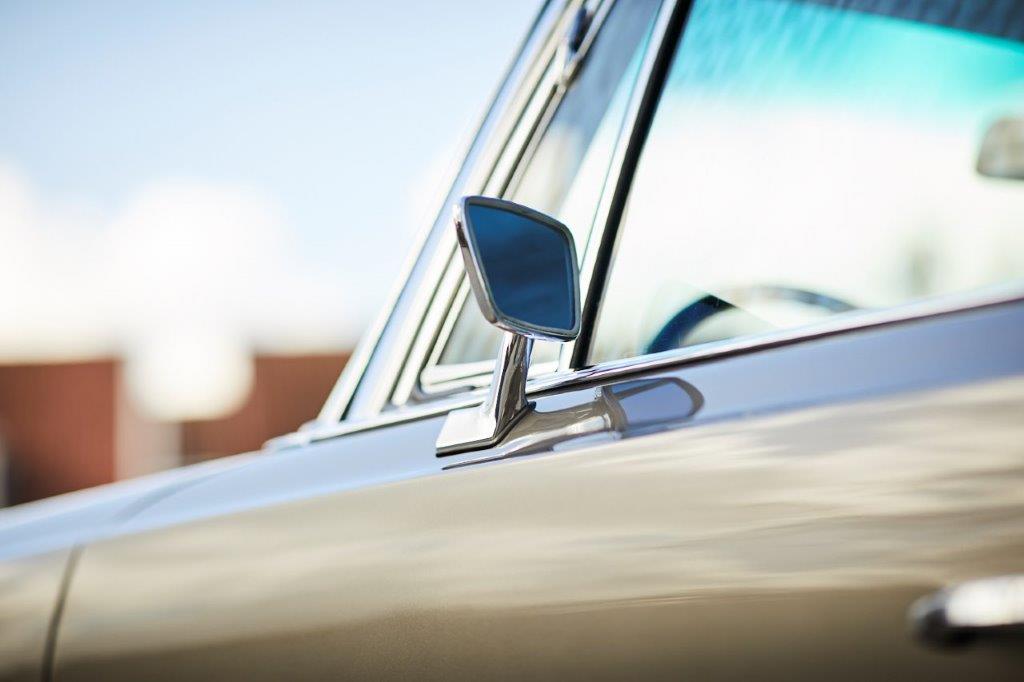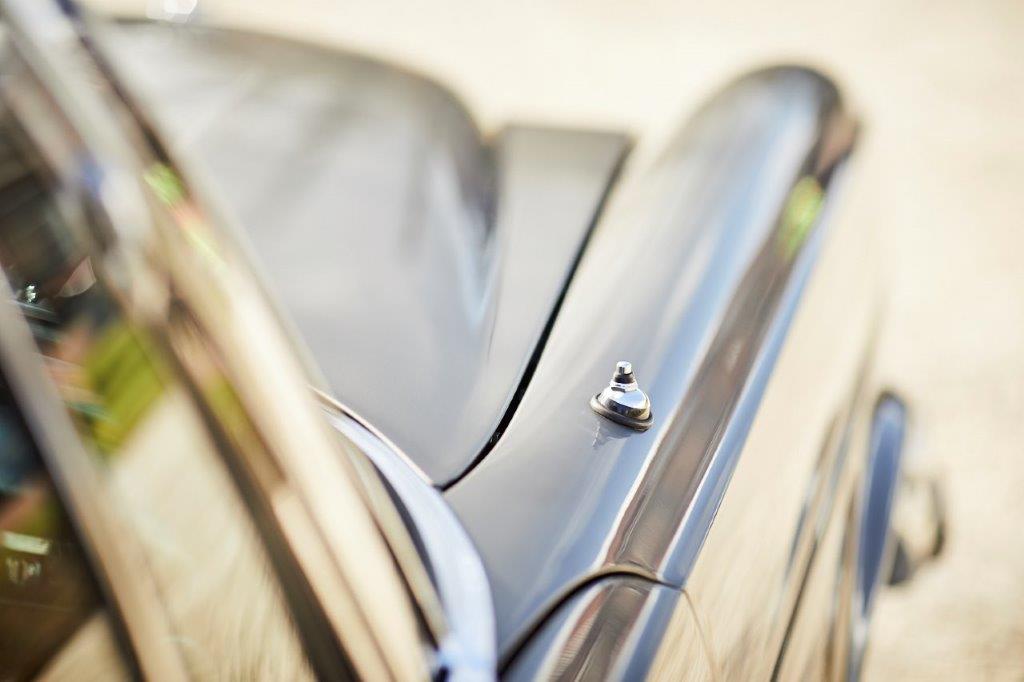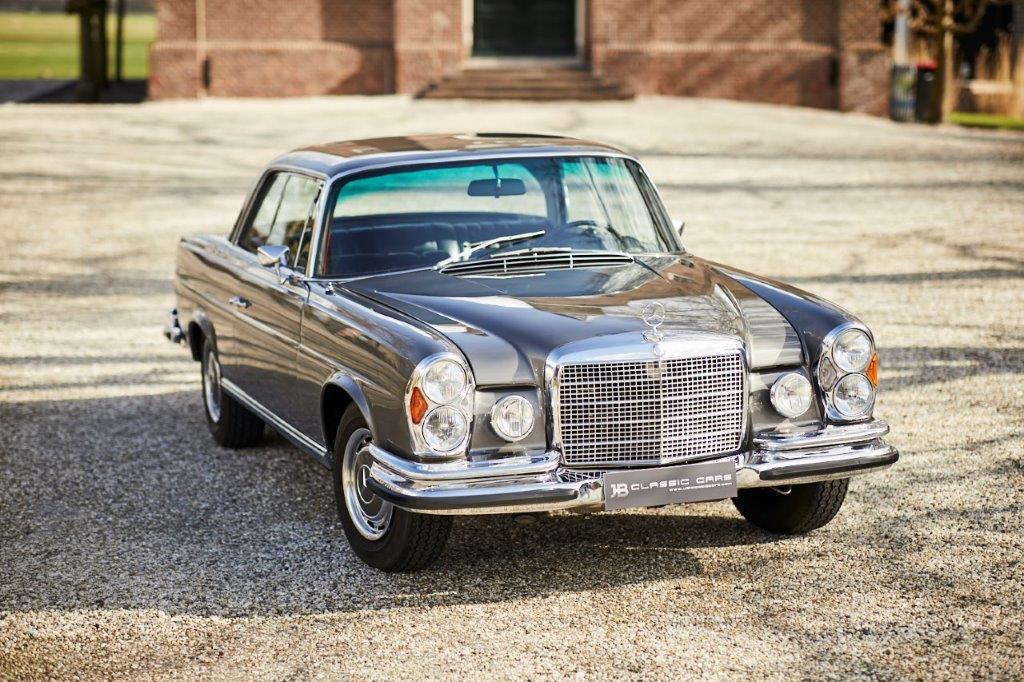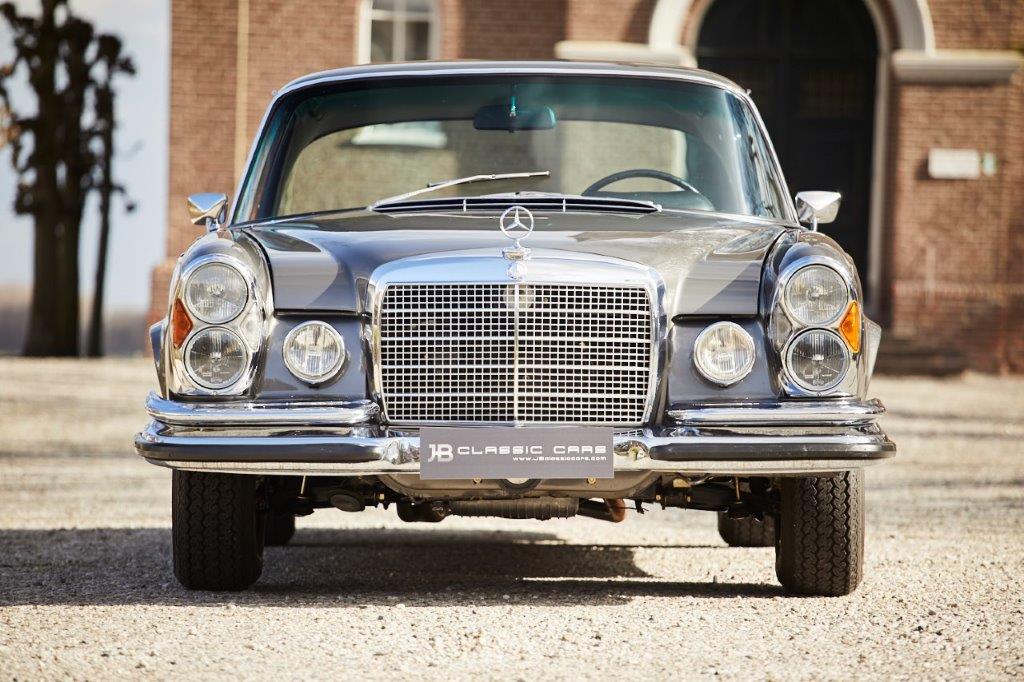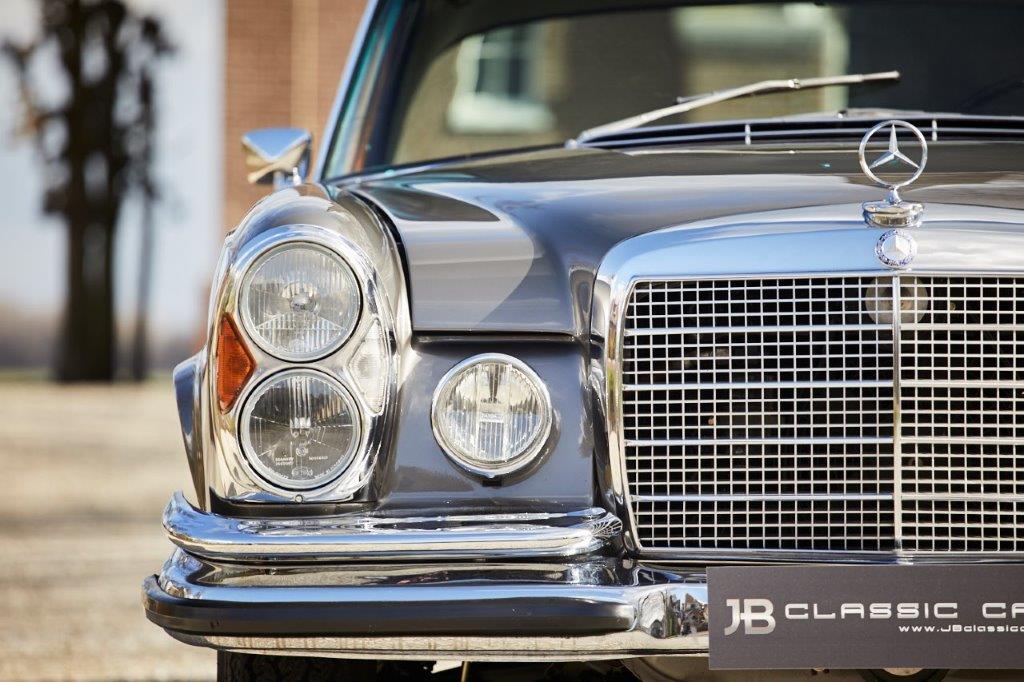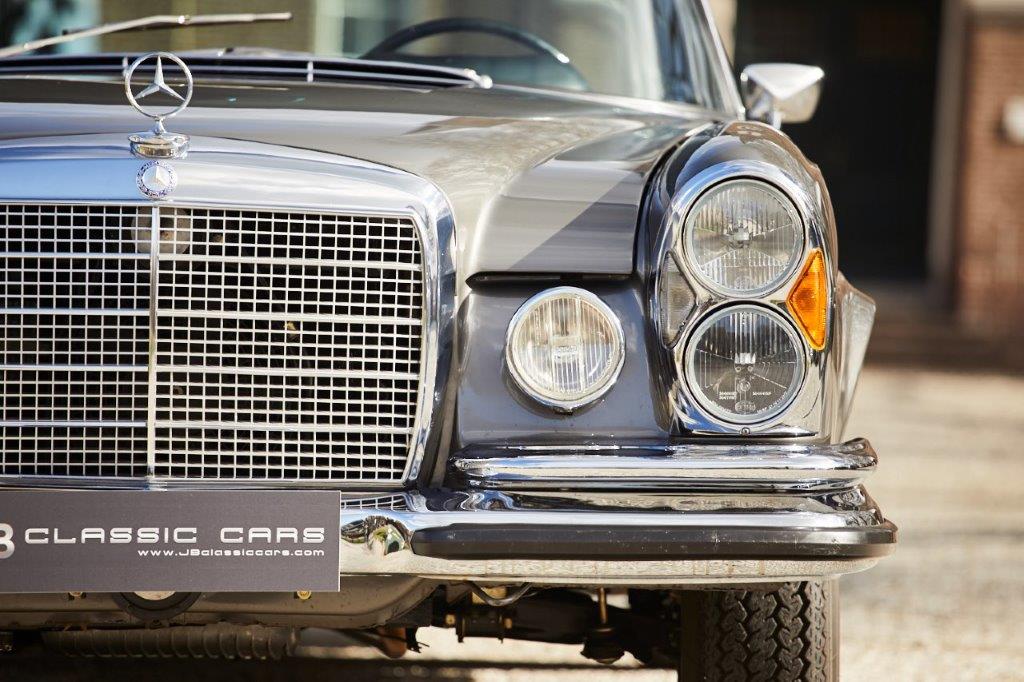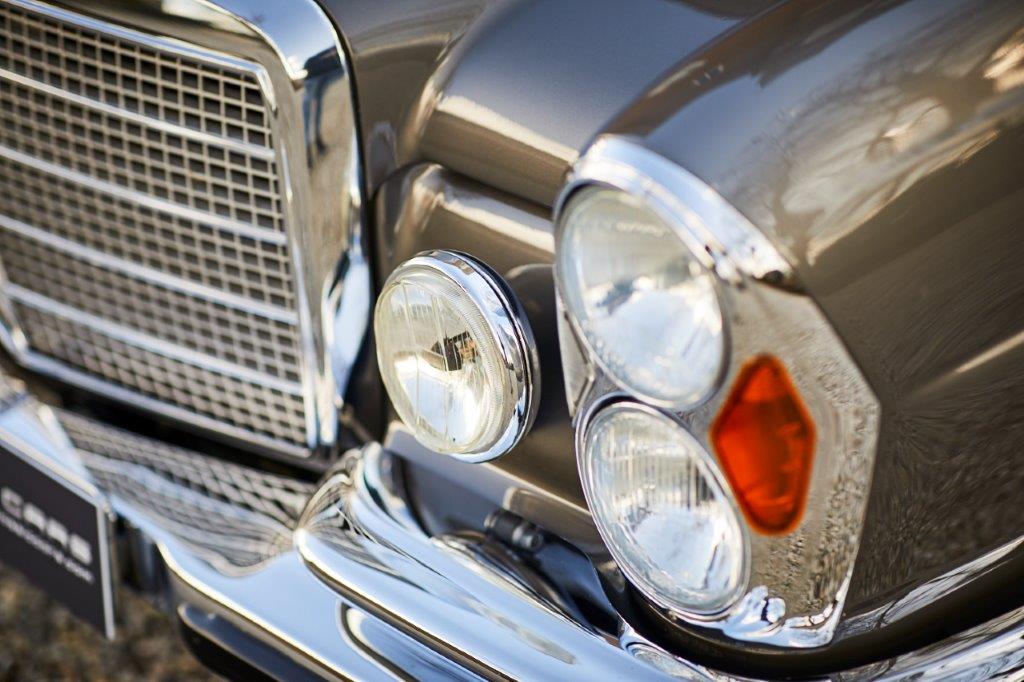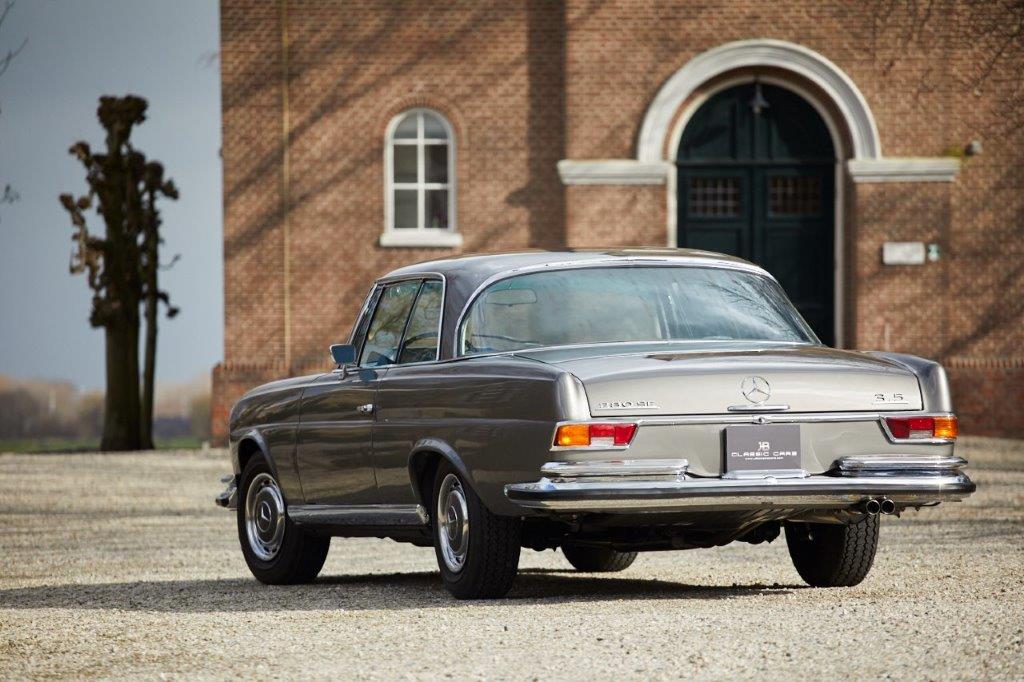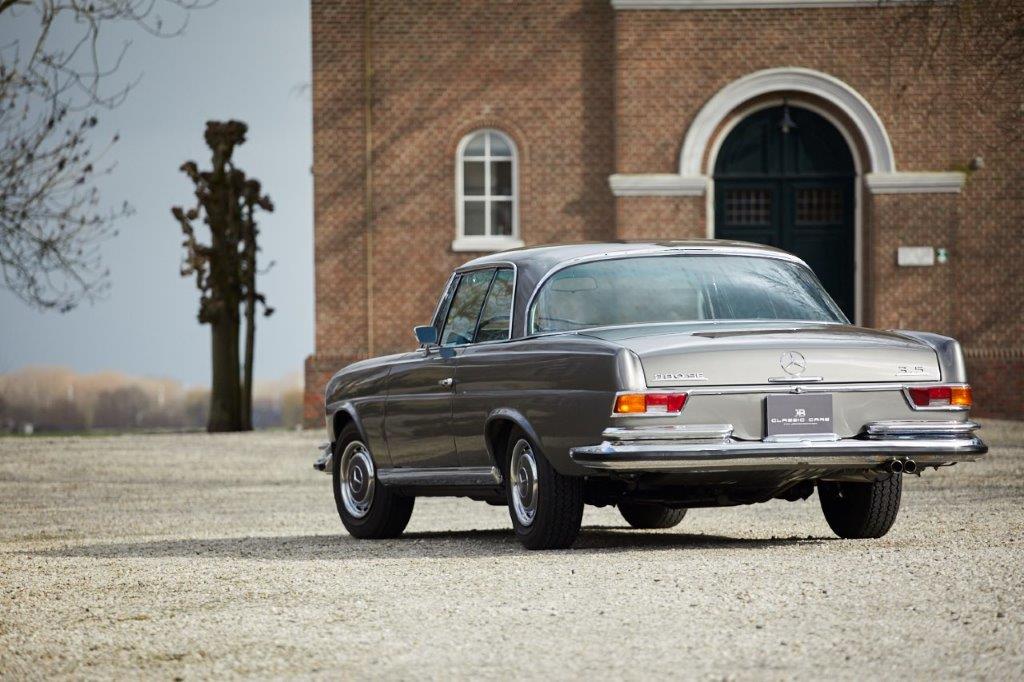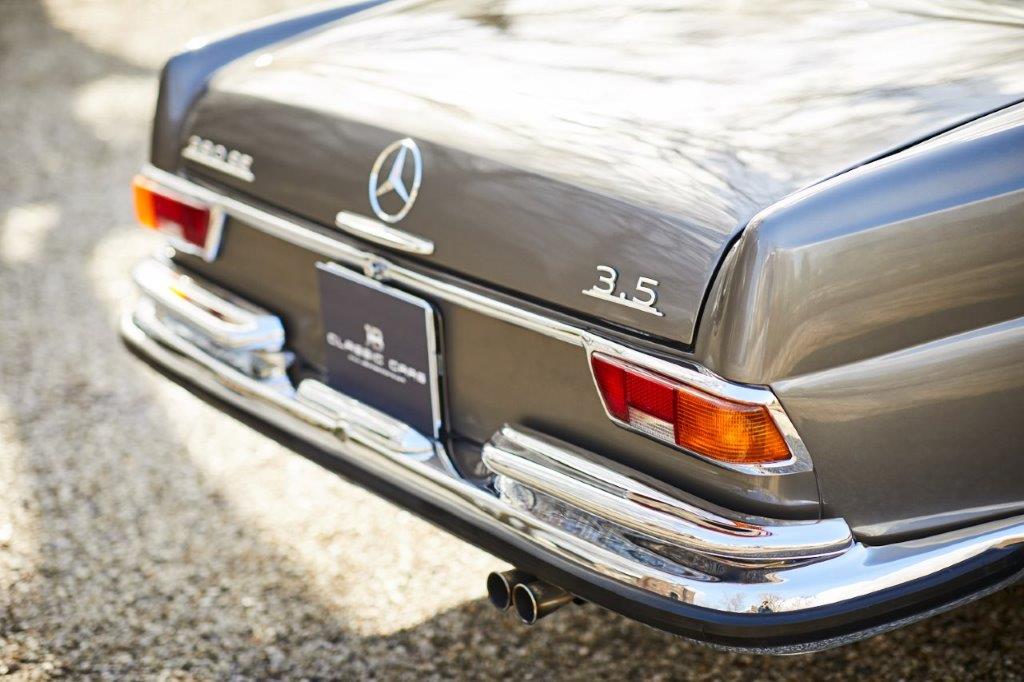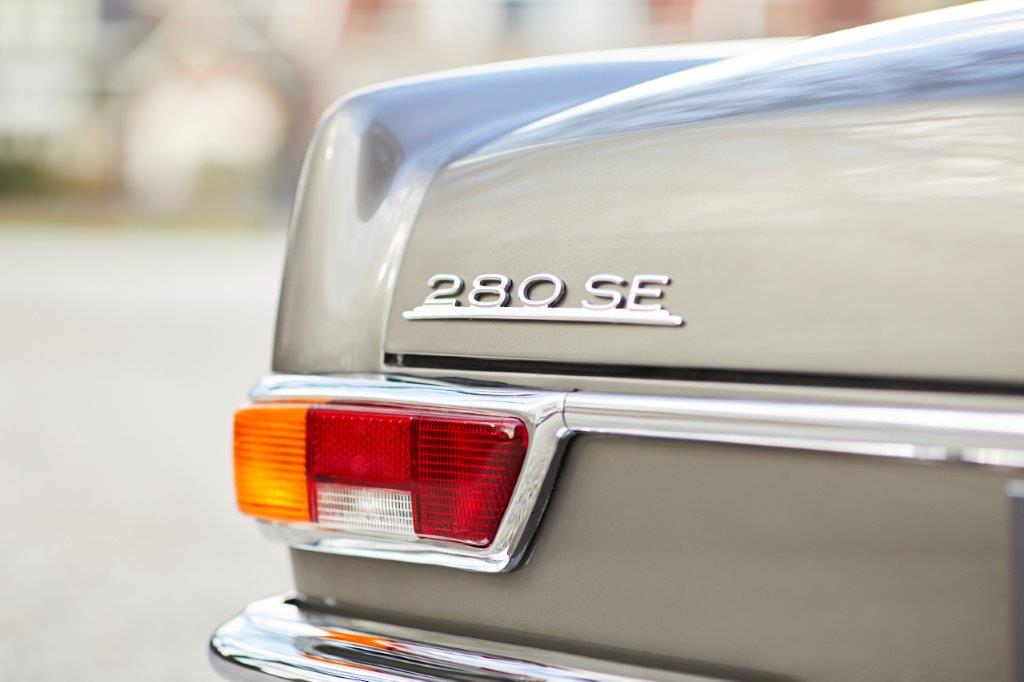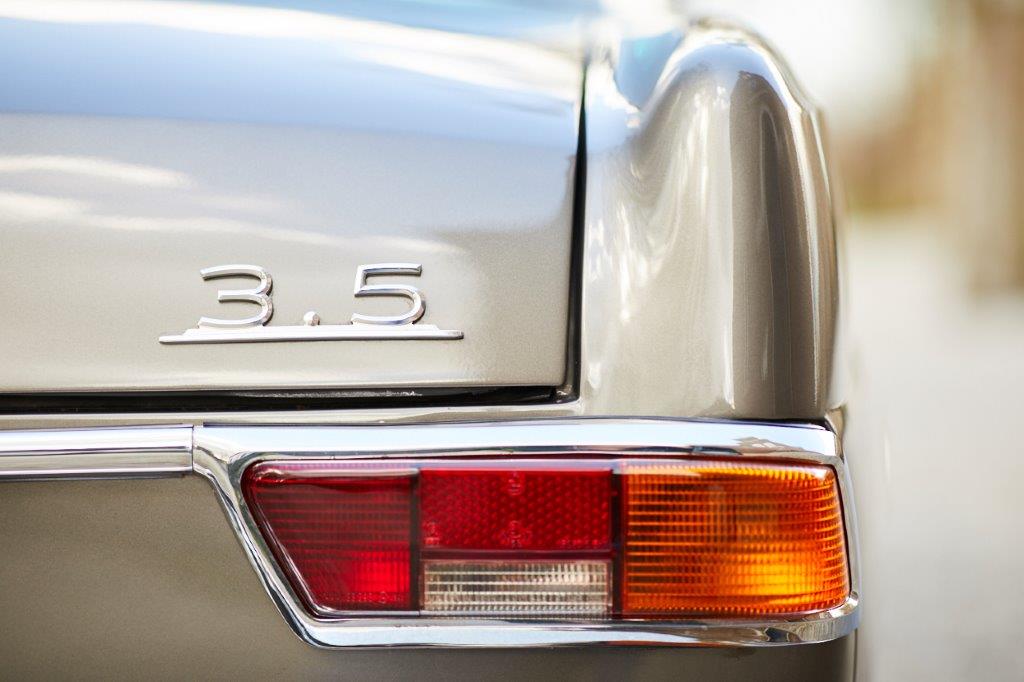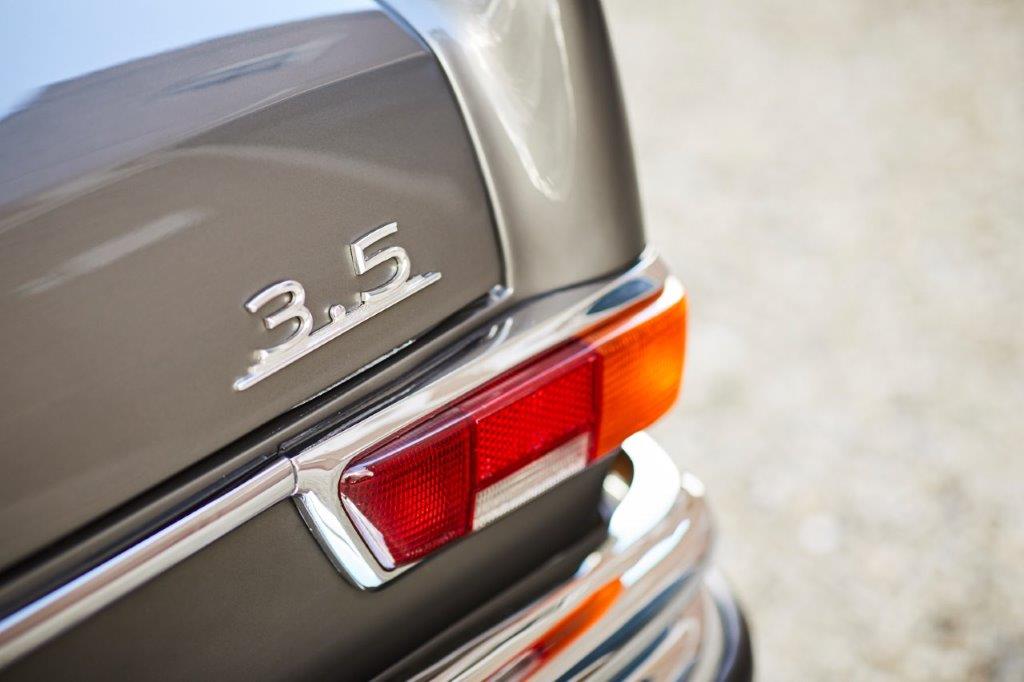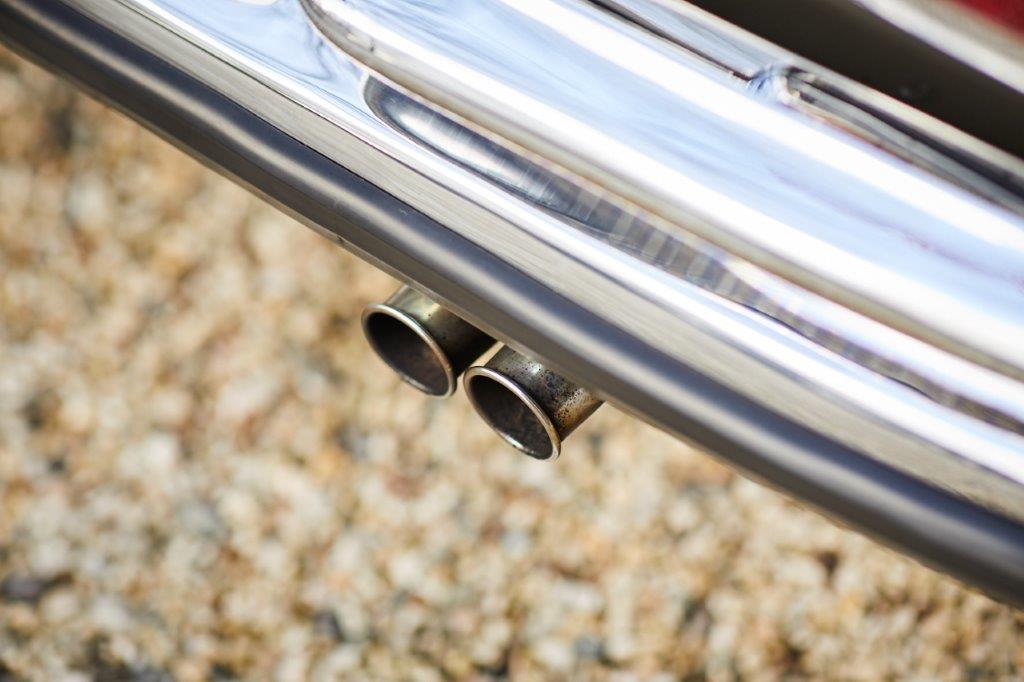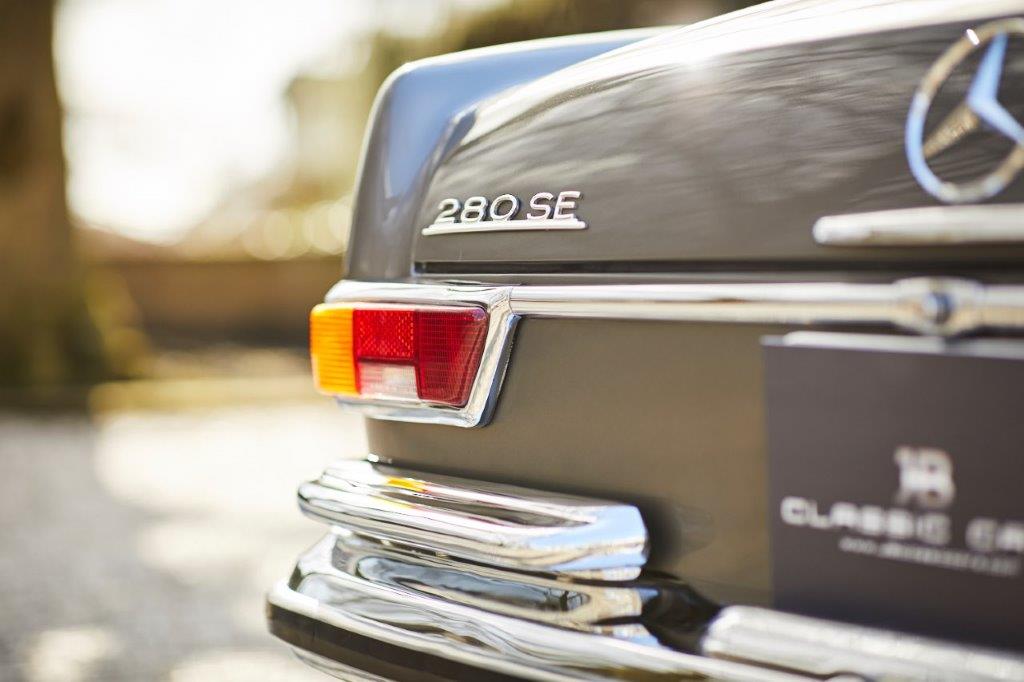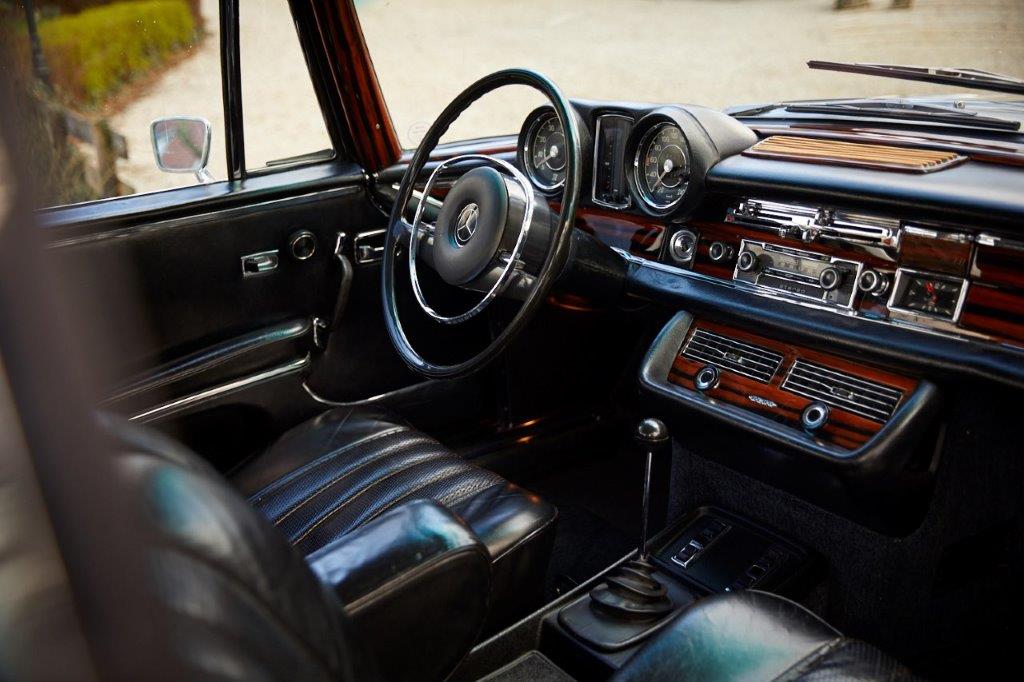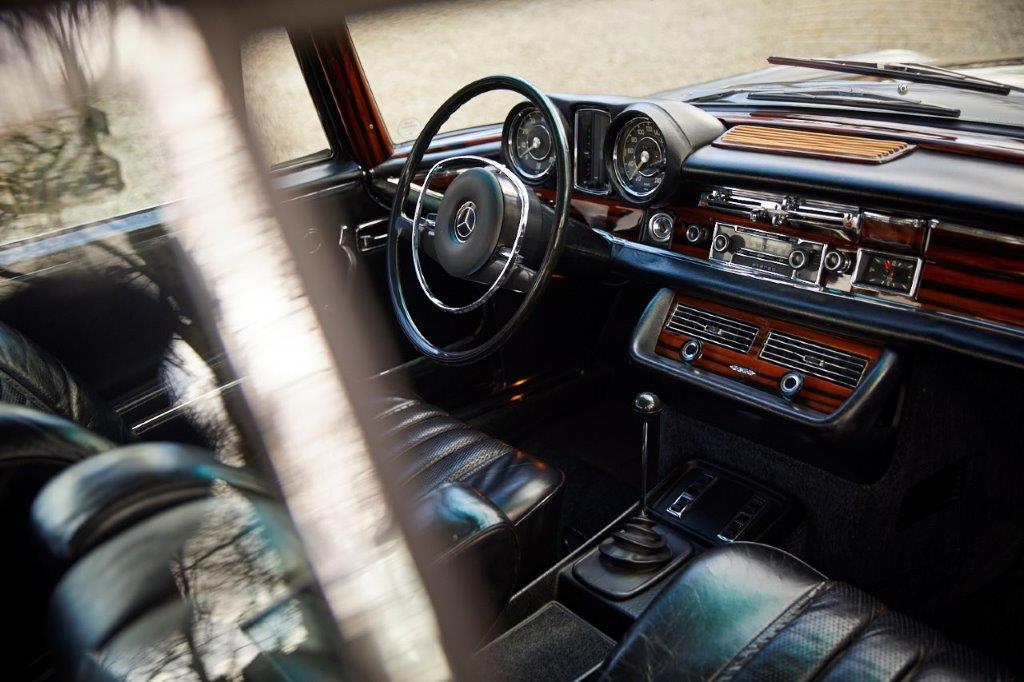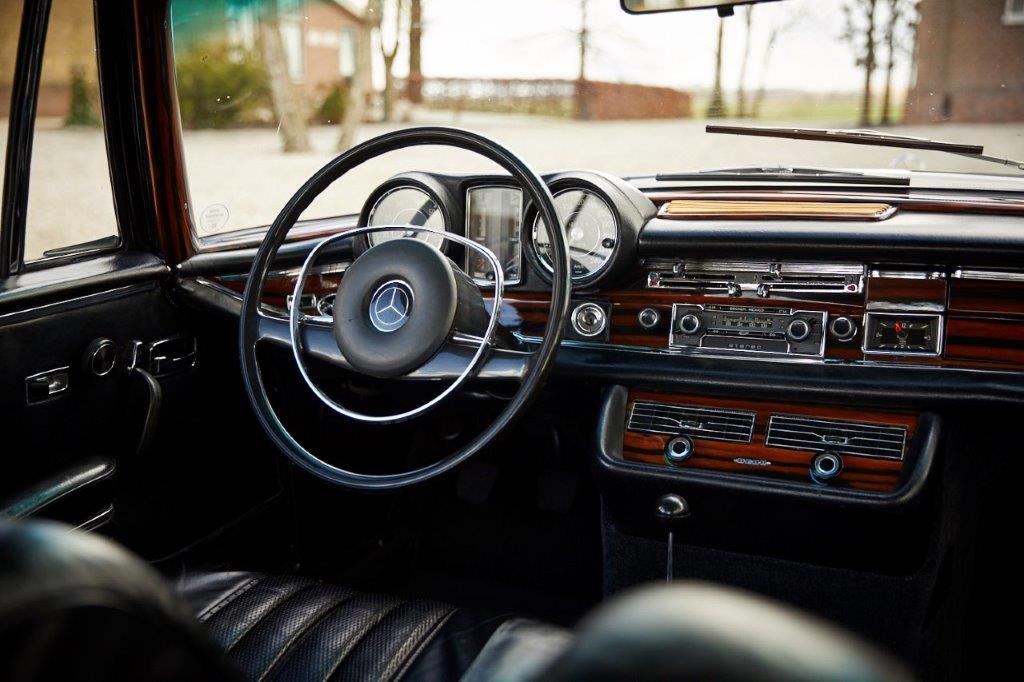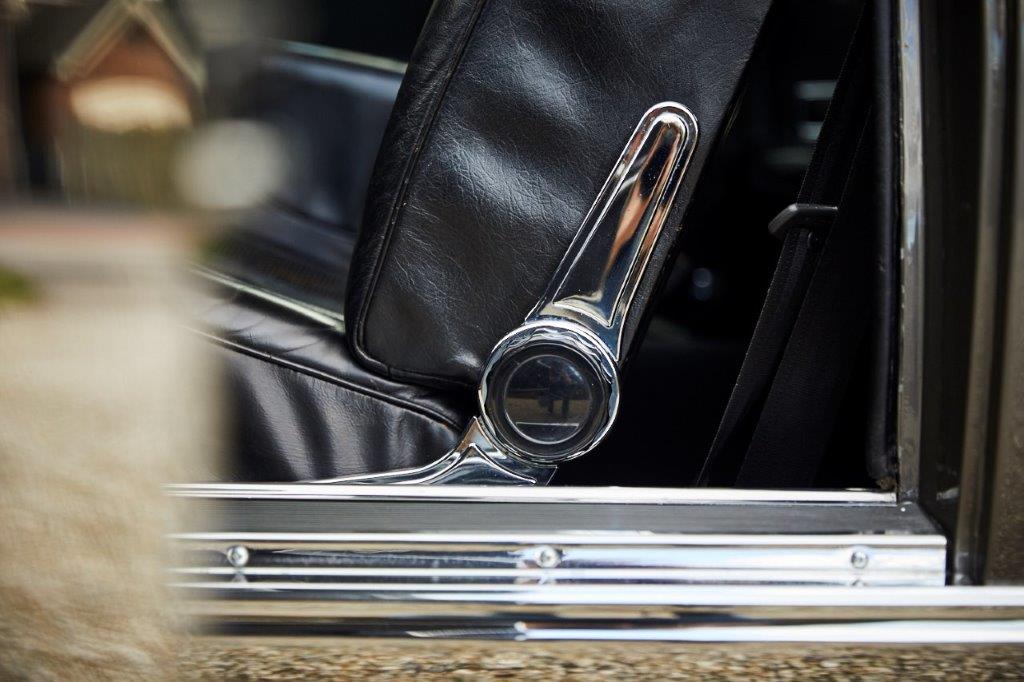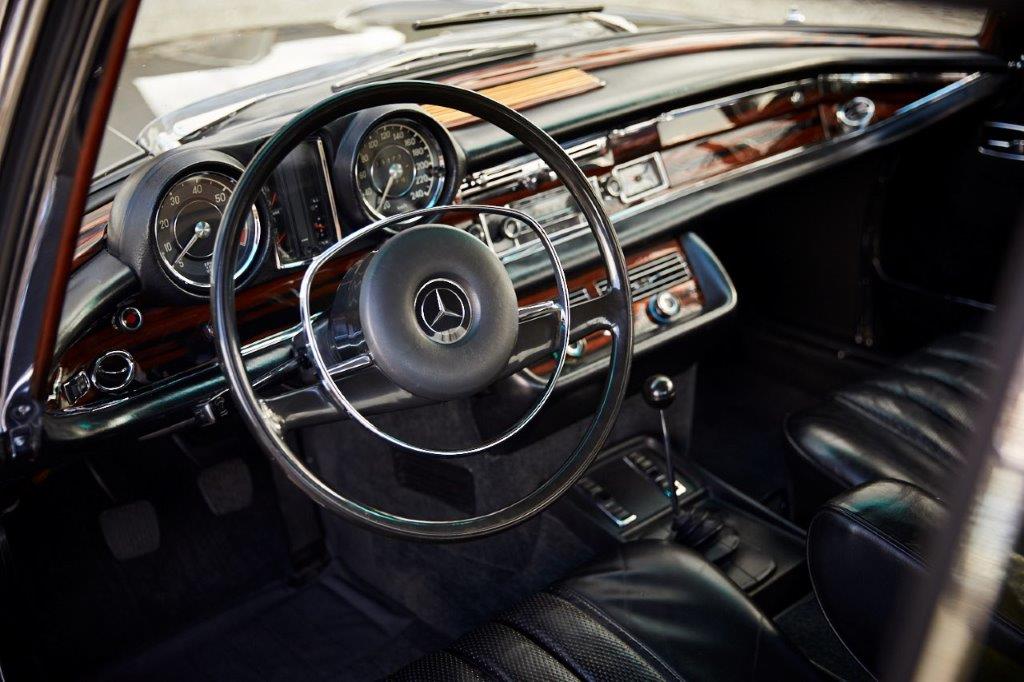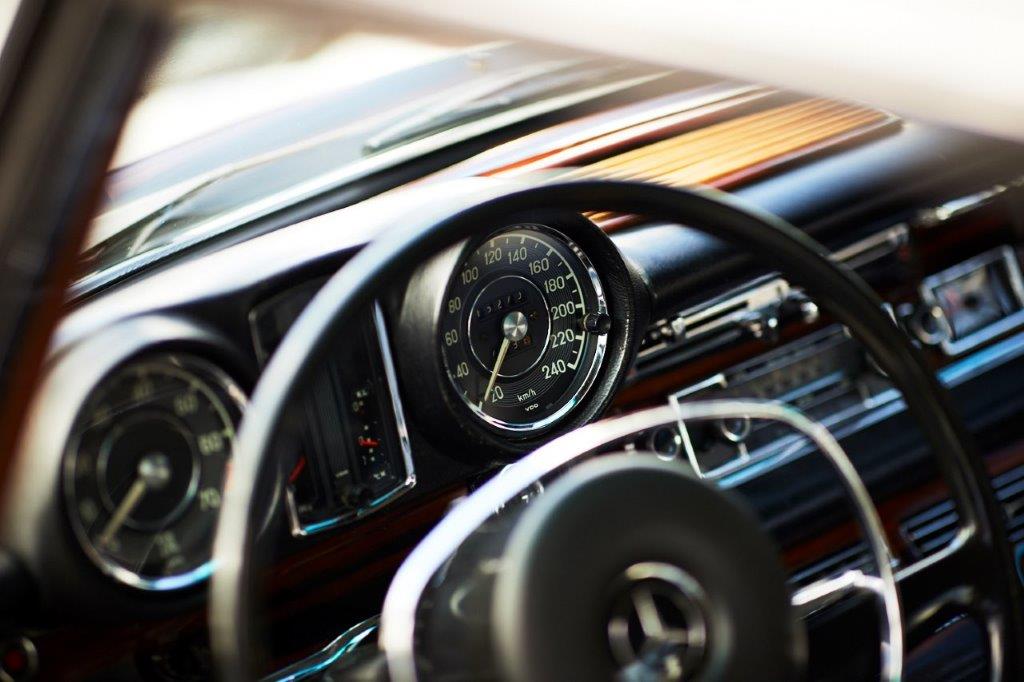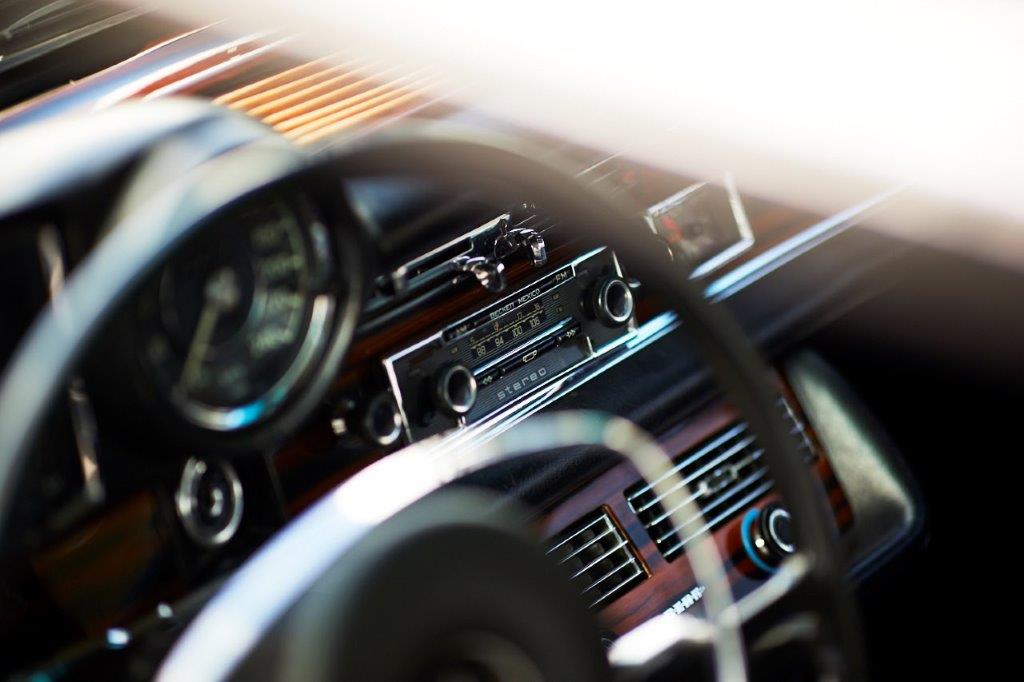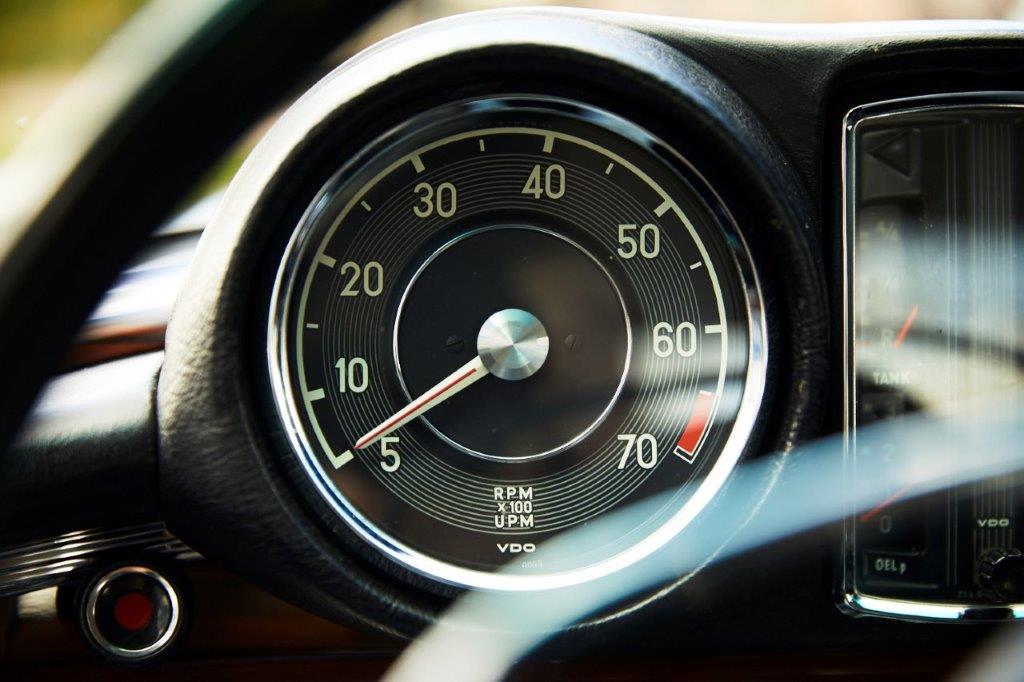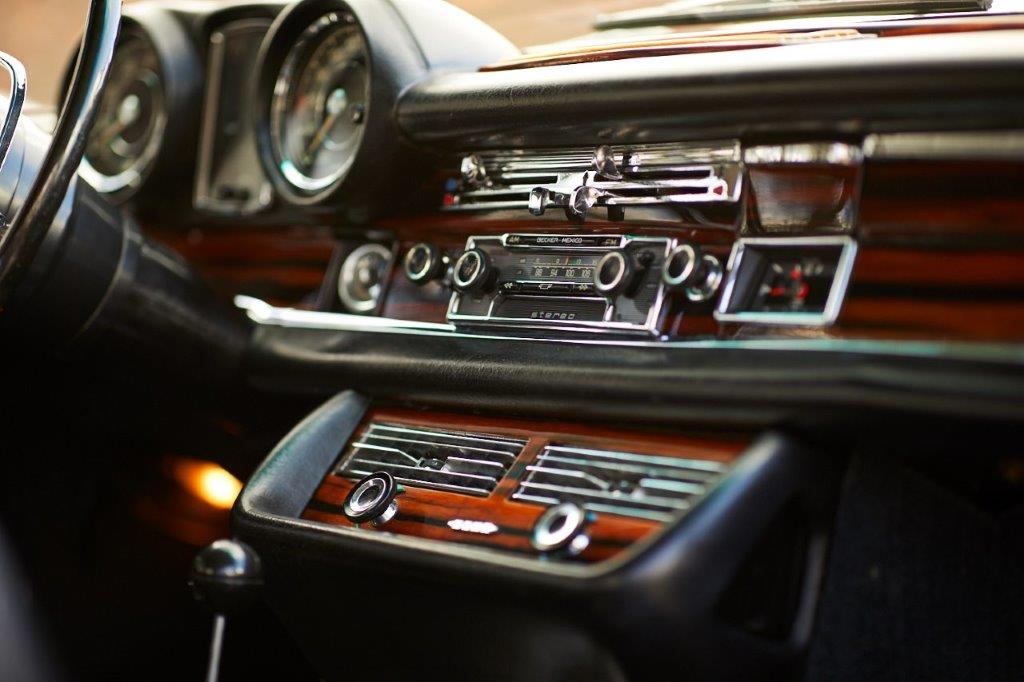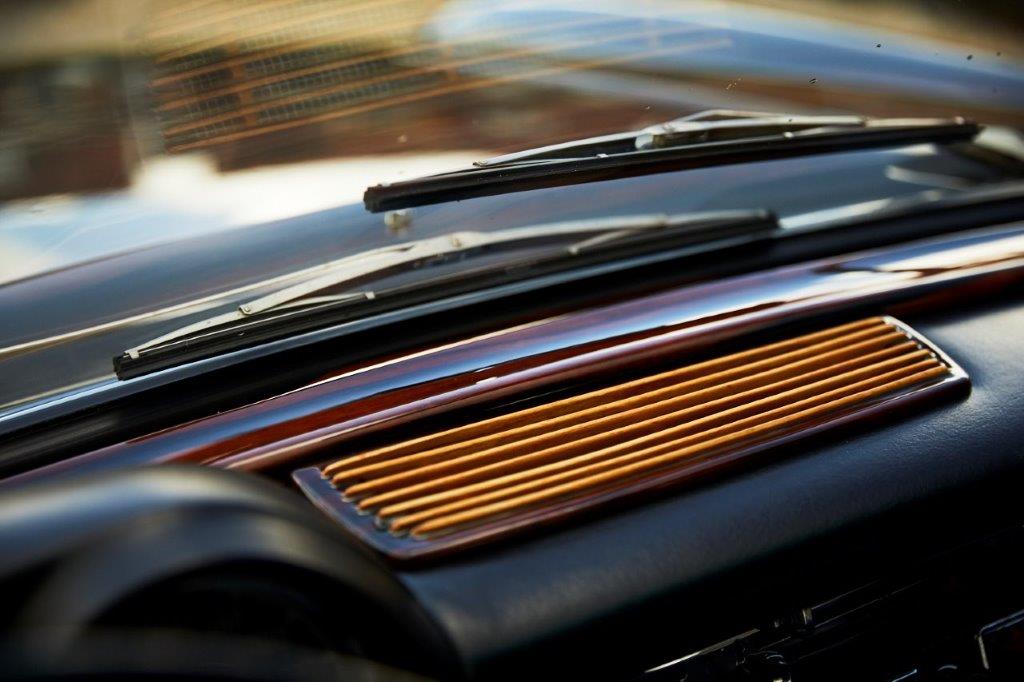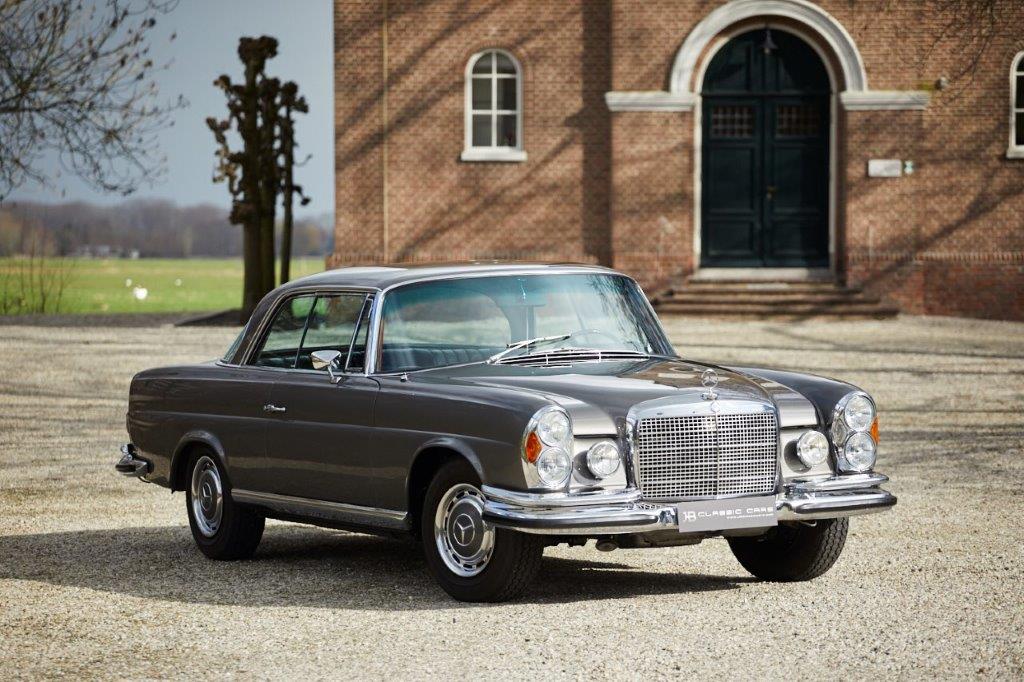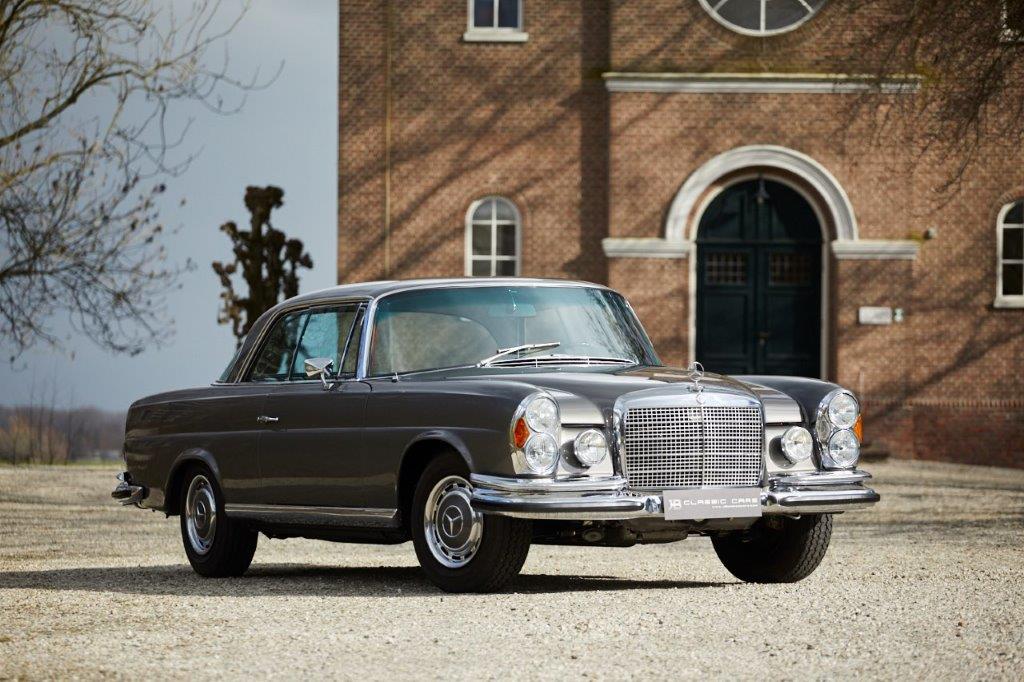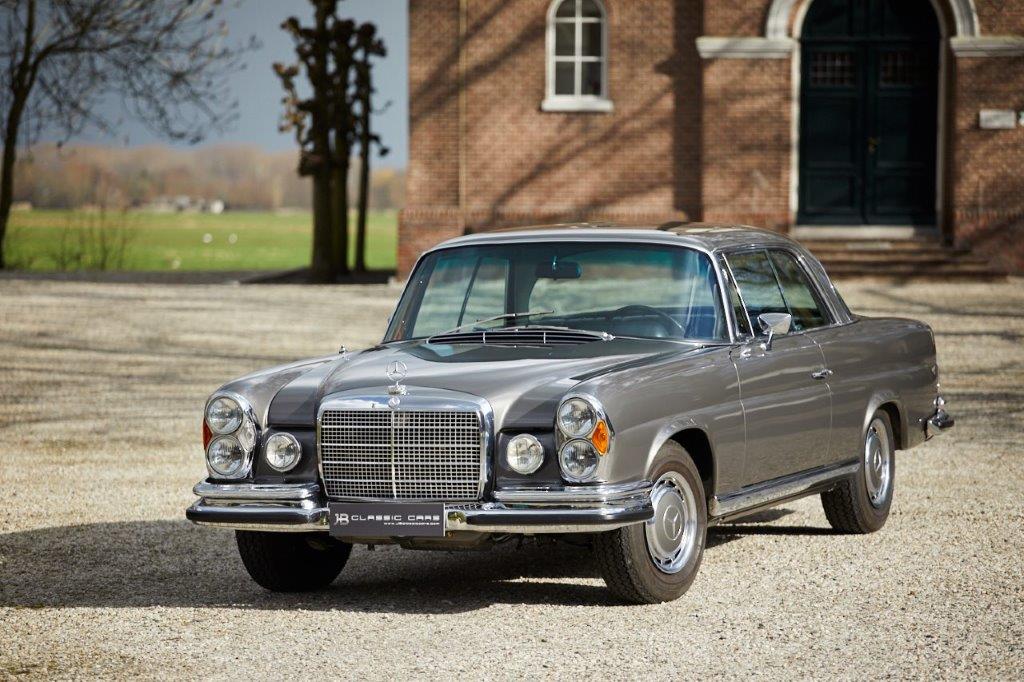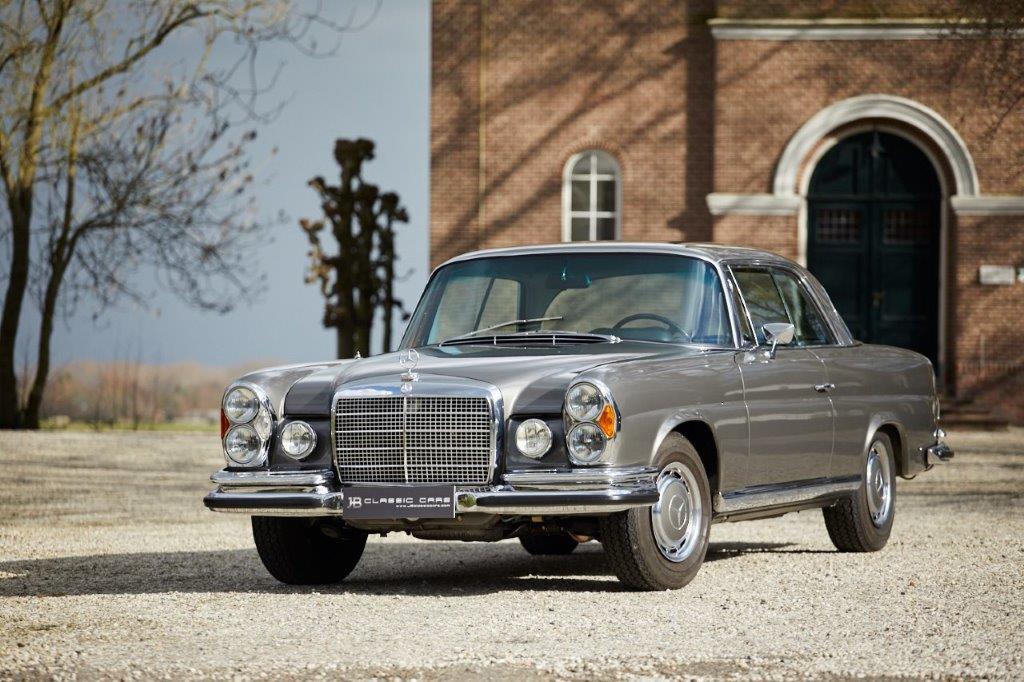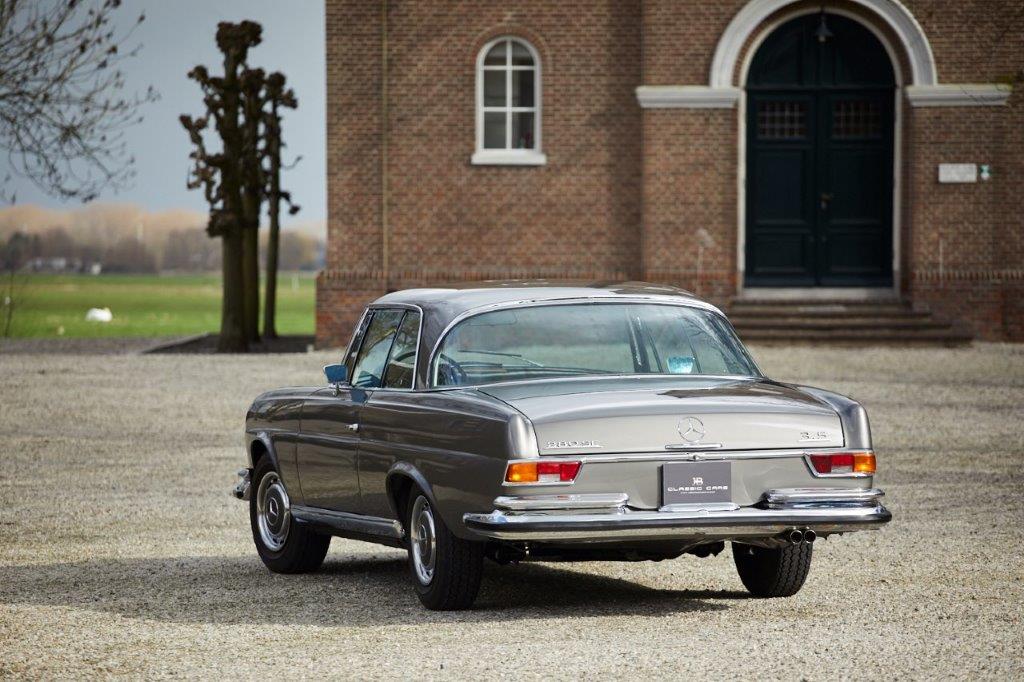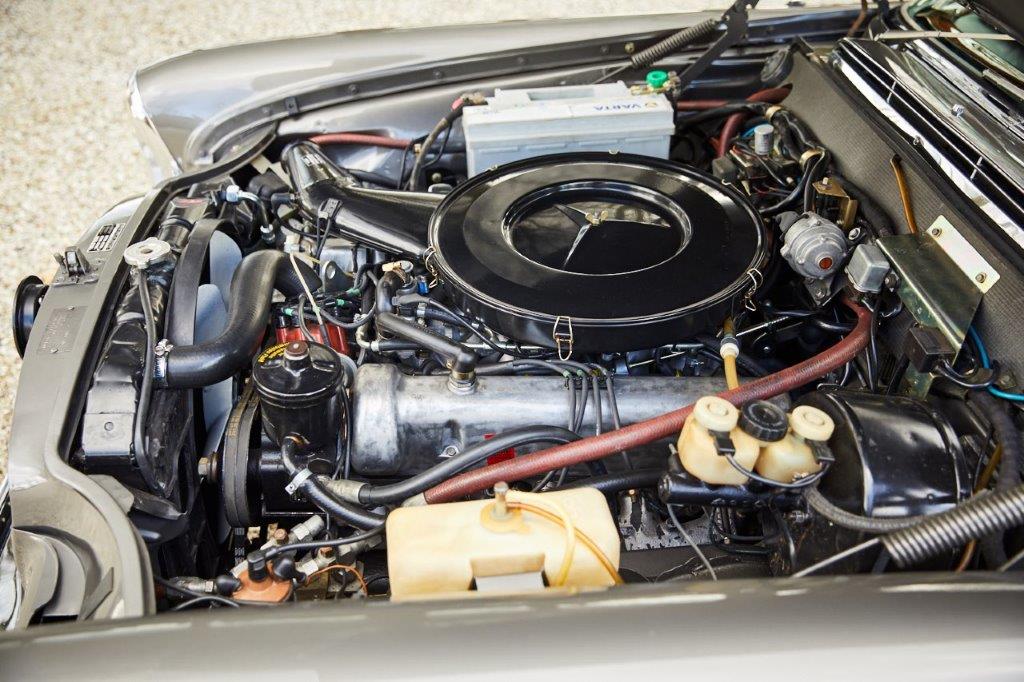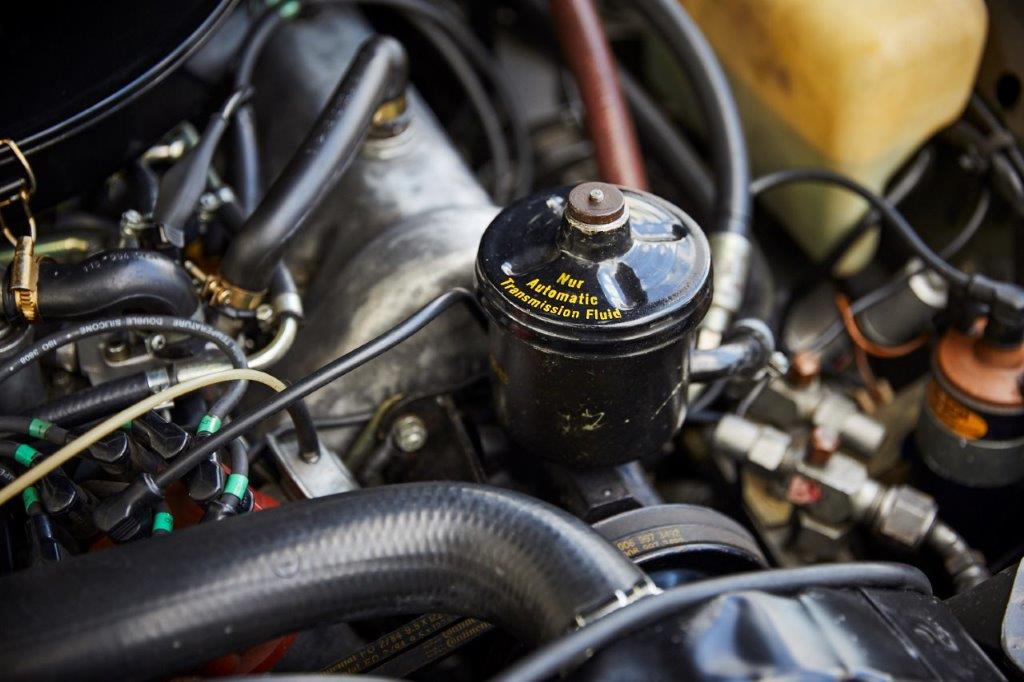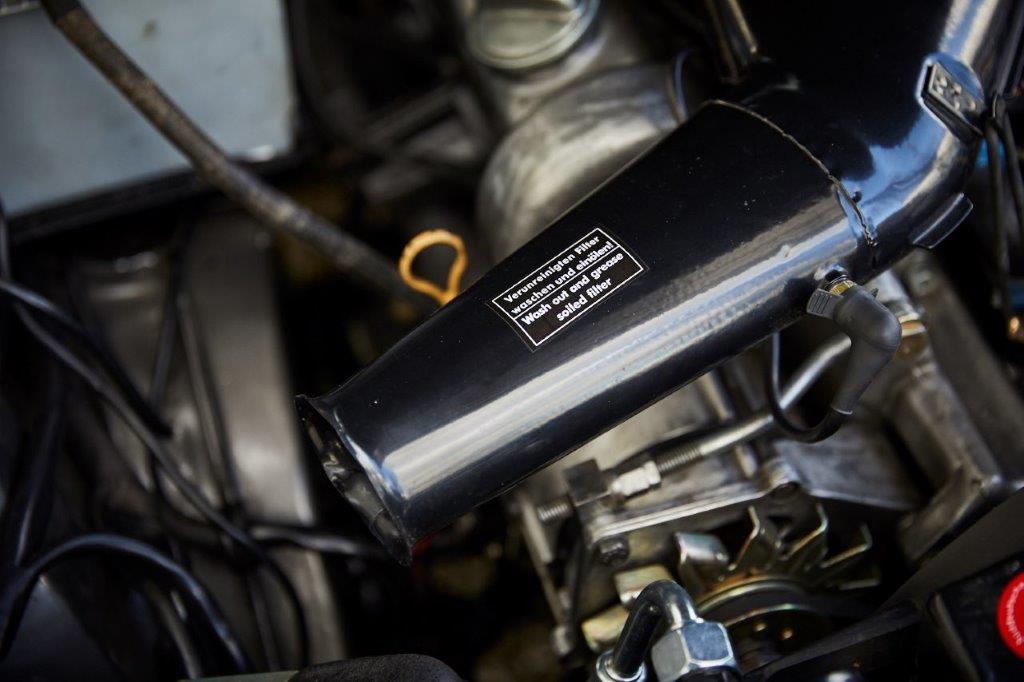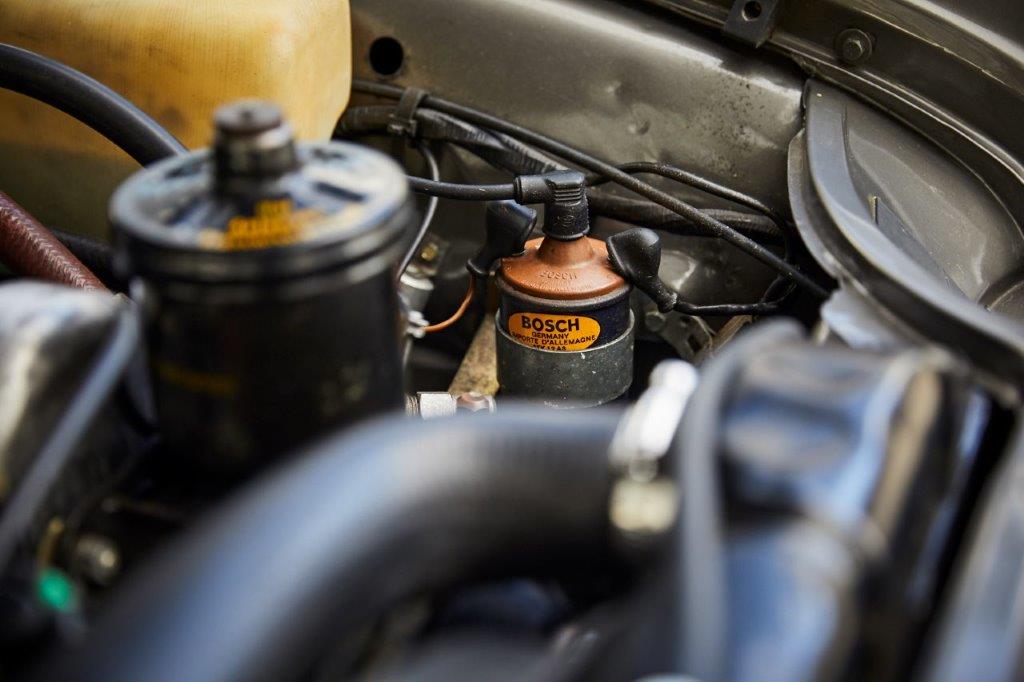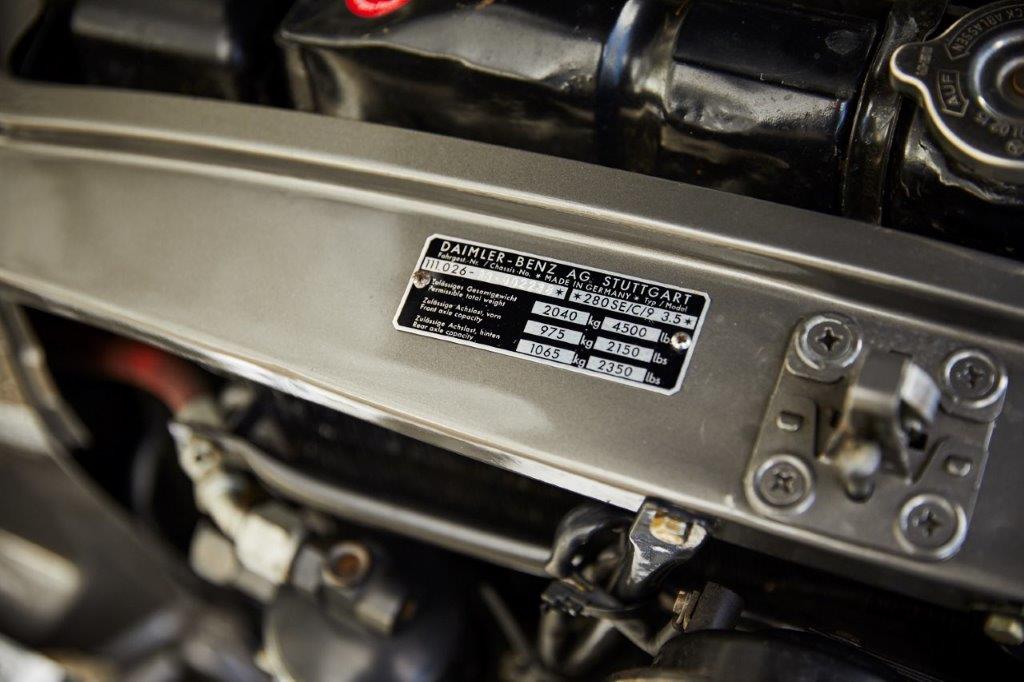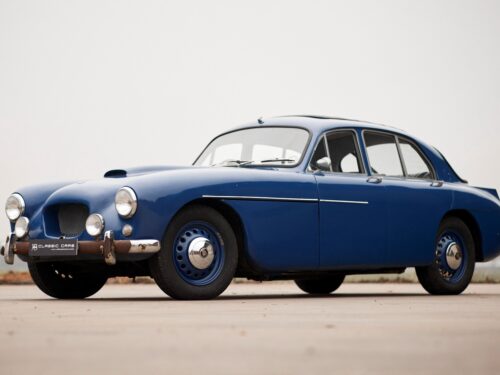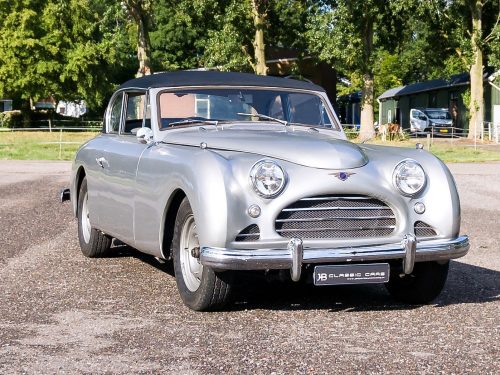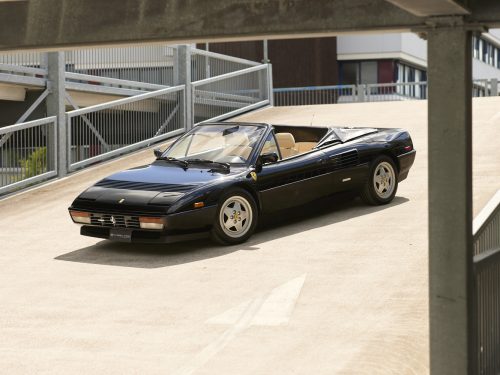Mercedes-Benz W111 280 SE 3.5
Coupé – Manual & Airconditioning
The combination of a restored anthracite grey metallic body and unrestored, original black leather interior make this Mercedes-Benz Coupé an outstanding, stylish German classic. Its timelessness, hand-crafted build quality and overall performance offer an attractive package for a wide range of drivers and collectors. The W111 280 SE 3.5 was Mercedes’ first post-War coupe that offered more than 3 litres. The fuel injected V8 proved to be a good companion. Being quick, reliable and stylish, it’s no wonder this luxurious automotive wannahave has a vast fanbase. Production numbers on the other hand were low. The manual version we offer here is a unique opportunity to acquire the ultimate version of the W111.
Although both the Coupé and Cabriolet were based on the same W110/W111 platform as the saloons, it required a lot of coachbuilding to finish them. Not as bespoke as the 600, but still an honourable amount of craftsmanship skills went into the W111 Coupé build. No plastic trim was used, to say the least. The (W110/111/112) saloons were better known als “Heckflosse” – German for their pointy tail fins – and already had a good reputation, even some in rallying. With the W111 Coupé and Cabriolet Mercedes-Benz took both styling and finishing to the next level. A facelift was introduced, just before the arrival of the desirable V8-powered versions, which flattened and modernized the overall design.
Road & Track described the renewed W111 Coupé as follows: “One of the best-looking body designs to come from any German concern. With its beautiful design and exceptional proportions, this series is an instant classic”. After Mercedes had decided they would stop coachbuilt cars on the assembly line the W111 3.5 was their craftsmen’s goodbye present to the world, but it also introduced a new vision on mass production: to build cars that would be relevant for their entire lifetime, even 20-30 years after production. The W111 280 SE 3.5 Coupé doubled that easily.
Frenchman Paul Bracq designed and styled several models for Mercedes-Benz for over a decade, when he was chief of design. When he joined the design team, led by Friedrich Geiger, the W111 was already penned by Geiger himself. At first Bracq started to work on the infamous Pagode hardtop roofline, before he started to re-style the W111 Coupé and Cabriolet just before their introduction. A major difference were the flattened tail fins and steep rear end, that’s why the appearance of the two-door W111s differ so much from their 4-door counterparts. Bracq already left Mercedes – after he got homesick and then designed the TGV, back in his home country- when the facelift and 280 SE 3.5 were introduced, but he still had a great influence on their styling. Bracq had lowered the hood and grill under the final supervision of Friedrich Geiger. And gone were the chubby Mercedes looks. Together they pushed Mercedes-Benz into the modern era.
Nowadays these facelift models are known as Flachkuhlers (or Low Grill) and can also be recognized by a subtle rubber strip on the bumpers. In the same style Bracq had designed the W108/109, the first S-Class. While Bracq took most credits for his influence at Daimler-Benz, Geiger on the other hand liked to work under the radar, as a true teamplayer, but his role at the Mercedes-Benz styling department was huge as a designer and perhaps even more as the director of design. For instance, the 540K and 300 SL were already styled by him, but he always mentioned the team effort. After Paul Bracq left Geiger should design the W111 2-door successors: the R107 and C107. Under his wings Bruno Sacco became the best man in line. One who should lead Geiger’s team all the way towards the Millennium.
Although Volvo comes to mind when we discuss road car safety, it is Daimler-Benz that introduced tons of new safety features in their cars over time. On the W111 for instance several safety innovations were deployed. Think of a crumple zone front and back, a safety cell, plus soft impact materials and constructions. All patented by Daimler-Benz, but it is Daimler-engineer Béla Barényi who’s credited as the father of automotive safety. The Austrian Barényi worked together with a young Italian Bruno Sacco on safety features and structural concepts. Barényi was in fact head of the pre-development department and all his invention went straight to the patent department. Sacco described his mentor as a mad professor who wasn’t afraid to fight for more safety within all layers of the organisation. He came up with an incredible amount of new ideas and put safety high on the agenda. Béla Barényi must have saved millions of lives by doing so. Sacco continued this vision when he followed-up Fredrich Geiger.
The W111 played an important role in the history of Mercedes. It paved the way to an integrated approach within the design team, where road safety and platform strategy were no longer side subjects. Engineers and designers started to really understand each other’s language – still without the inconvenient interruption of the marketing and finance department. As a result the W111 was the first car that used the architecture as we still know it today in car design when we look at passive safety.
Better was it not to crash and to use the disc brakes all around. Fortunately our example is kept accident-free. The 280 SE 3.5 is quite modern and therefore easy to drive. Its fuel injection system and power steering make it easy to operate as well. The optional Behr air-conditioning, powered windows and a period correct Becker Mexico in our Coupé are all fine companions during trips. From the 3270 W111 3.5 Coupés that were made, just over a hundred examples were equipped with the manual gearbox. Although the automatic wasn’t poor on performance, the self-operated gearbox added a bit of sportiness that was well received. A sprint to 100 kmh just took a little over 8 seconds, compared to the 9.4 of the automatic. Top speed was a bit higher too, with a good 210 kmh. Driving the W111 3.5 Coupé could make you feel King of the Autobahn at the time. You just needed to be aware of any 300 SEL 6.9 or Facel Vega.
The best examples in EU-spec, with the cathedral headlights instead of US stacked headlights, don’t come onto the market that often. Most owners keep care of these cars for a long period of time and have no reason to sell such a great automotive masterpiece at all. This is why the W111 280 SE 3.5 in general has always kept its value more than its relatives. This Mercedes is no different. It was delivered to Switzerland in september 1970 and had one owner since 1996, who has kept it in his collection until now. We invite you to view this extraordinary Mercedes-Benz in our showroom in Bodegraven, The Netherlands.
Specifications
Fully restored, while the original interior was left intact
Matching numbers
Manual gearbox
Optional Air-conditioning and heat-insulating glass
Optional Powered windows (front and back)
Becker Mexico stereo
One owner since 1996
Mercedes-Benz Club Certificate of Authenticity
Additional information
Date of production: 15 september 1970 (delivered to Switzerland)
Colour: Anthracite Grey Metallic
Interior: Black leather
Chassis nr. 111026-10-002238
Engine nr. 116980-10-00386
Gearbox nr. 000821
Body nr. 01460

